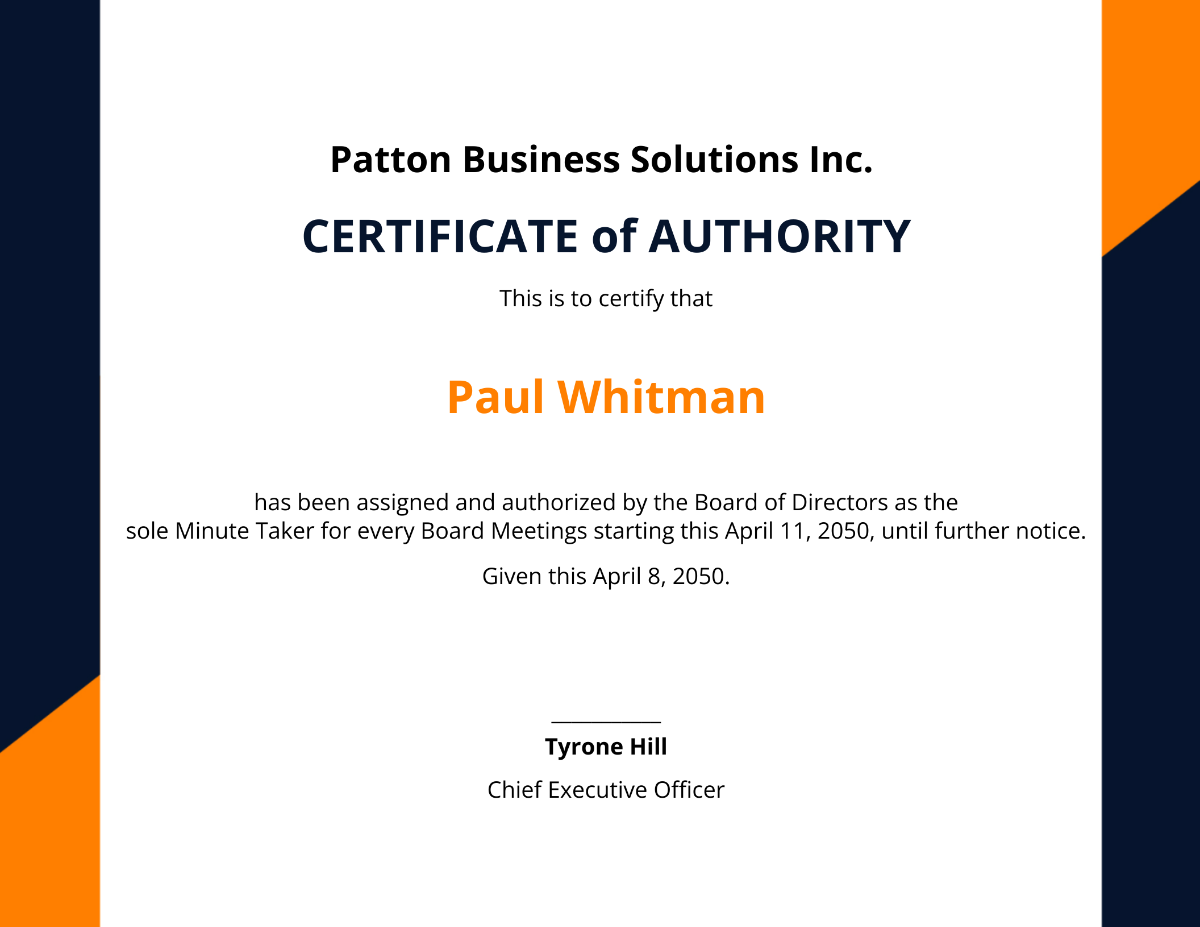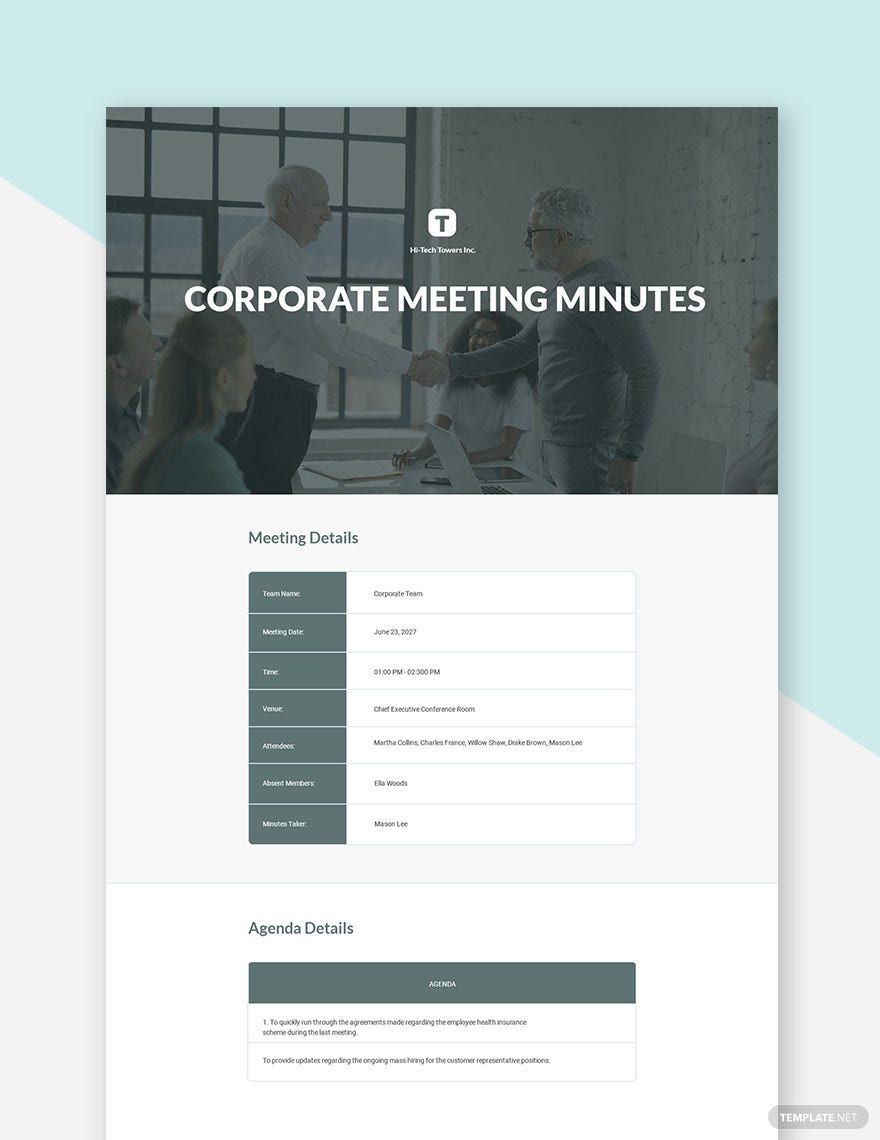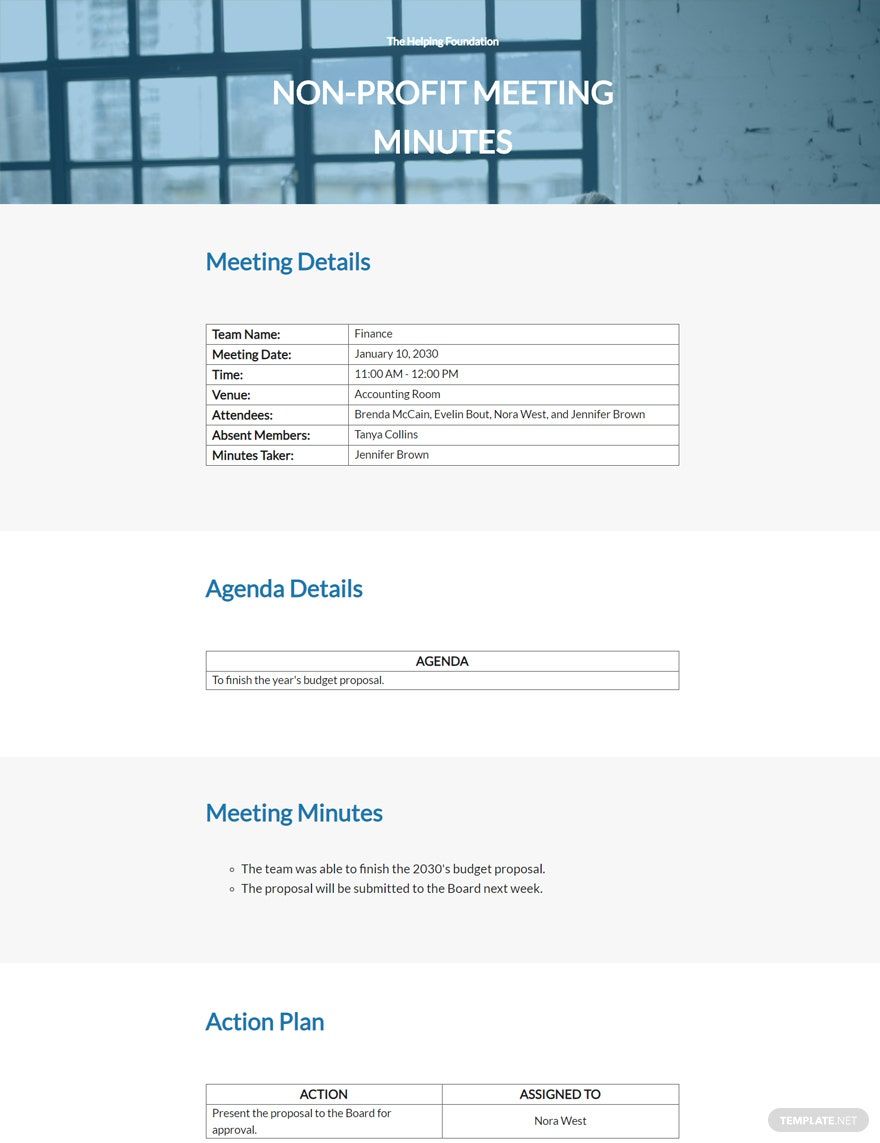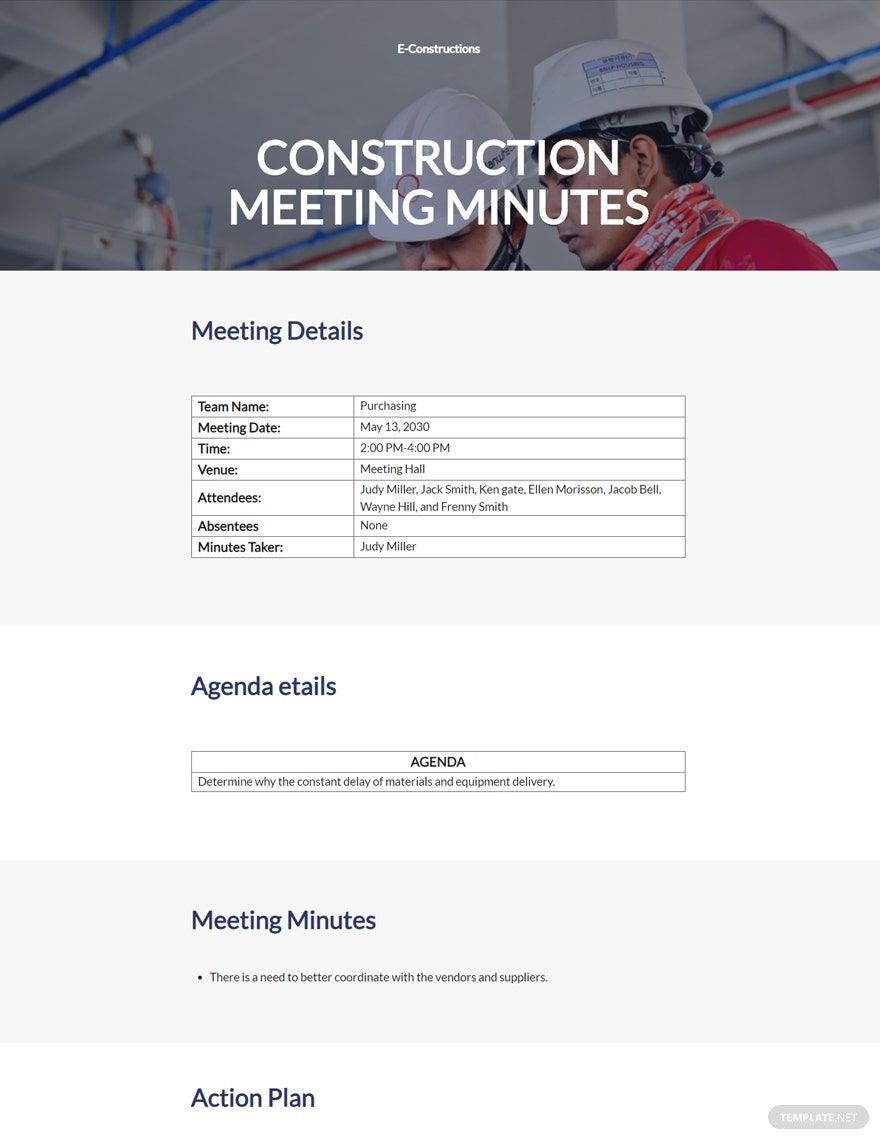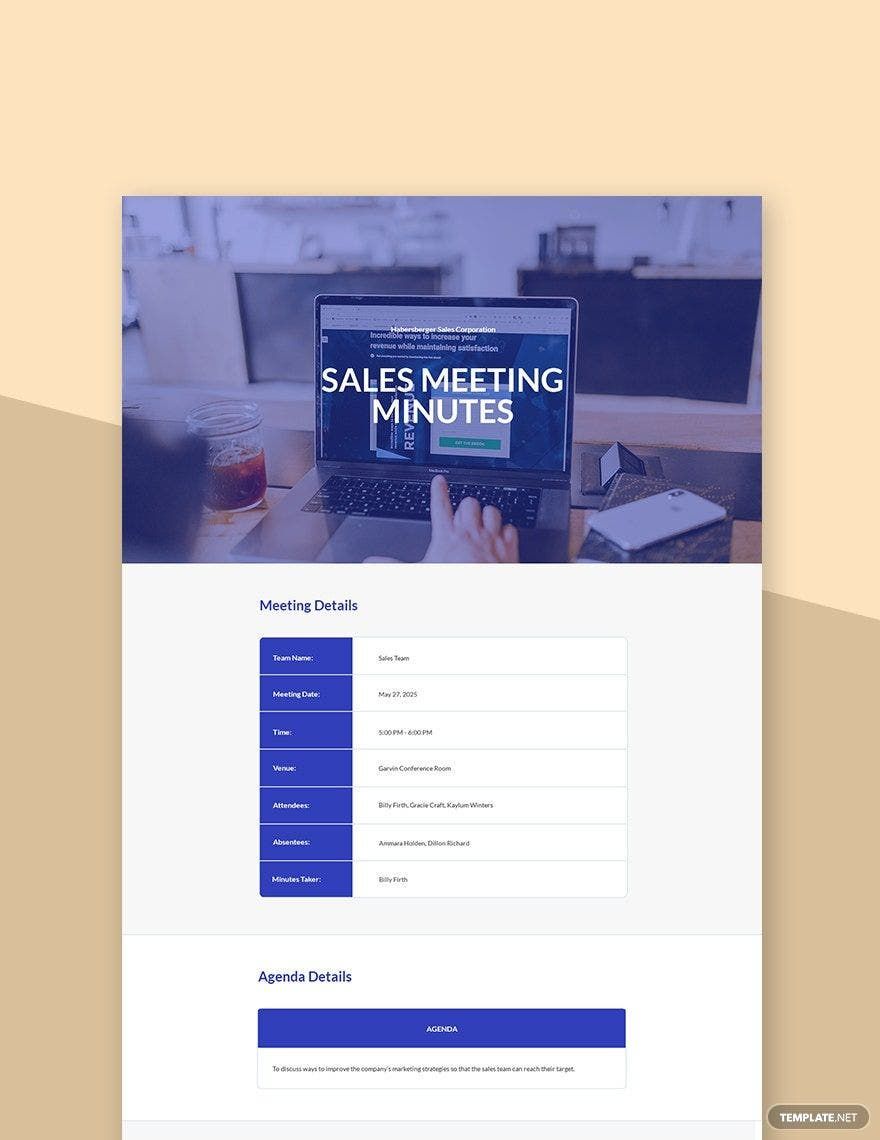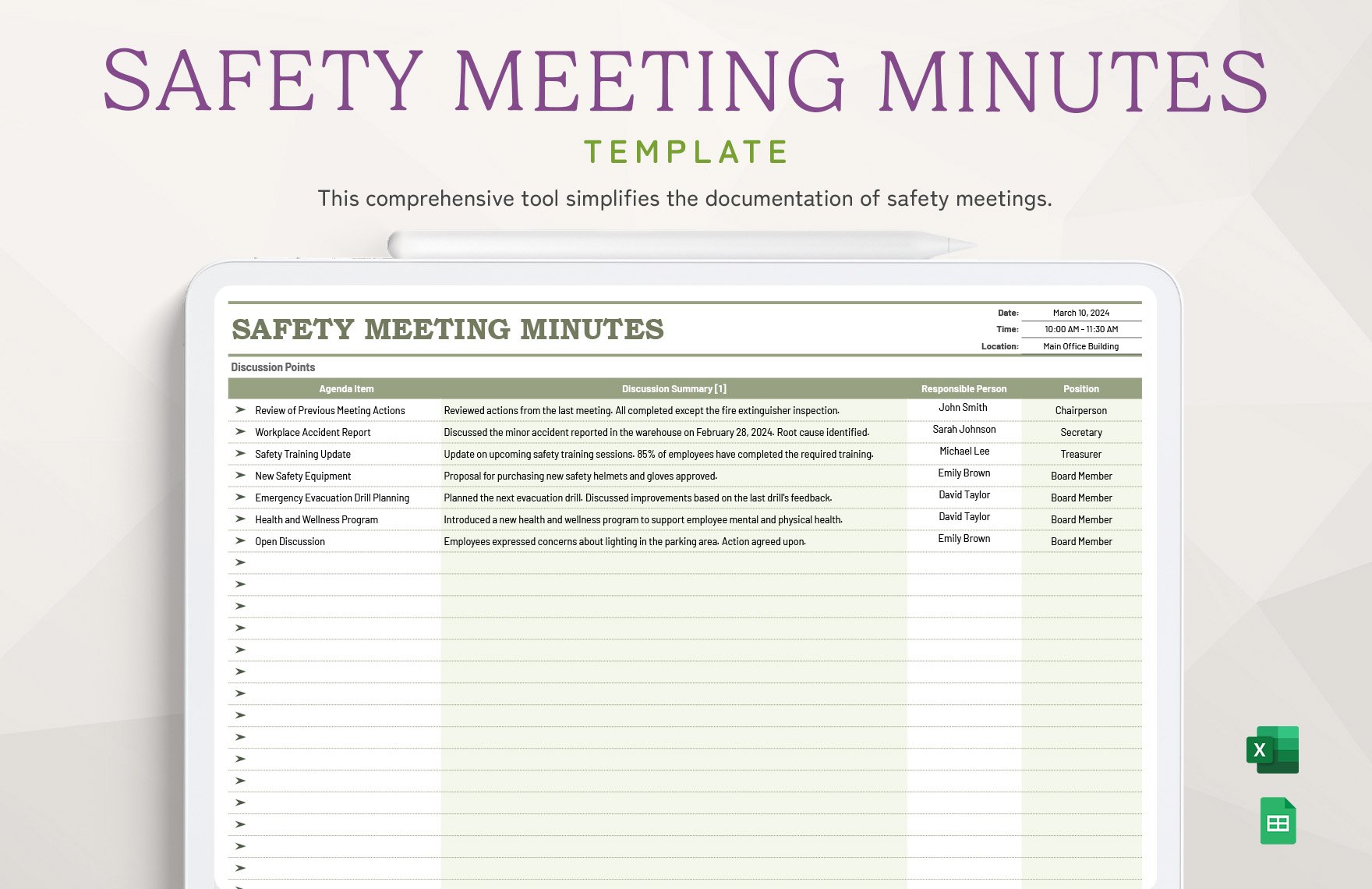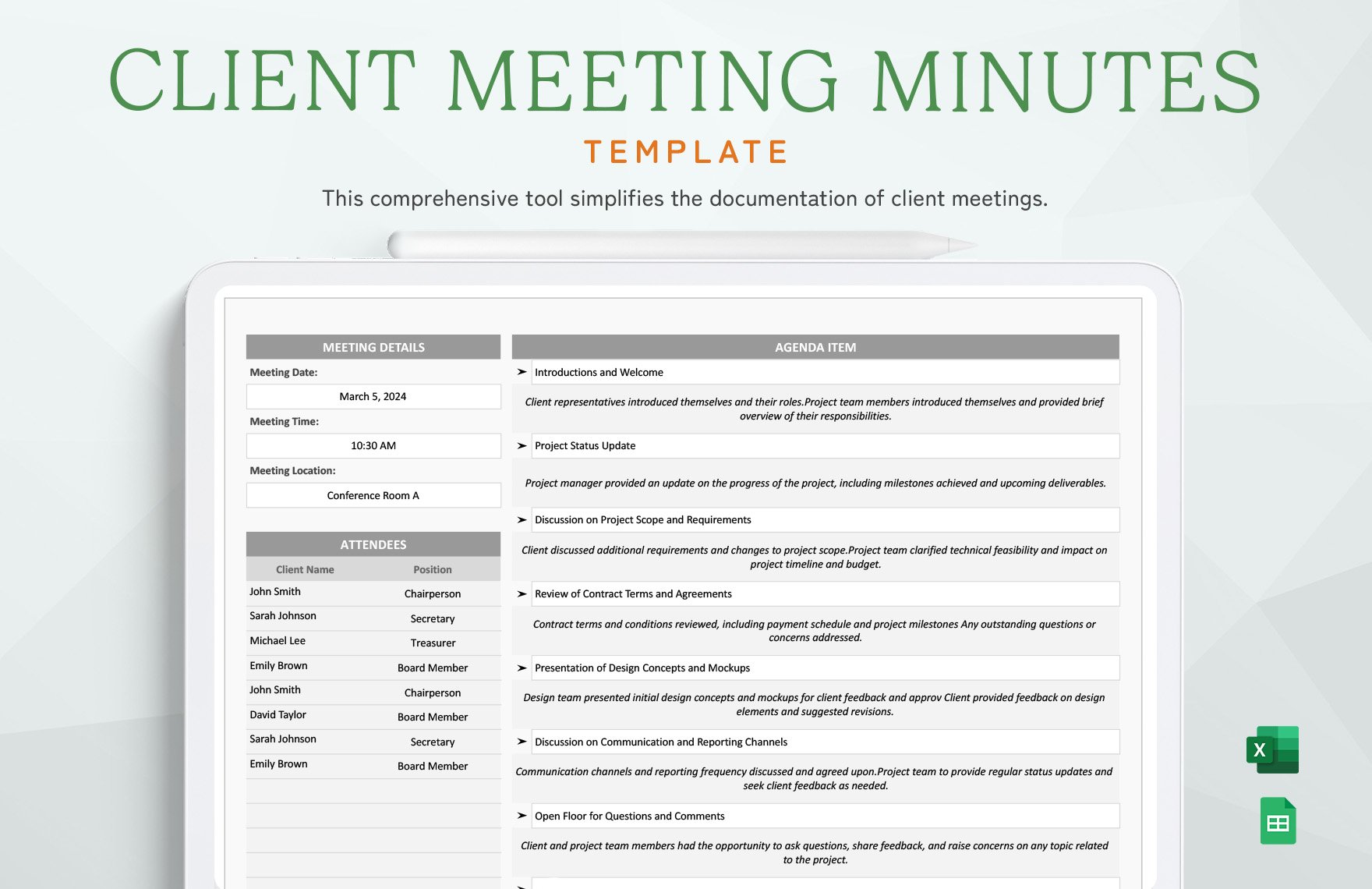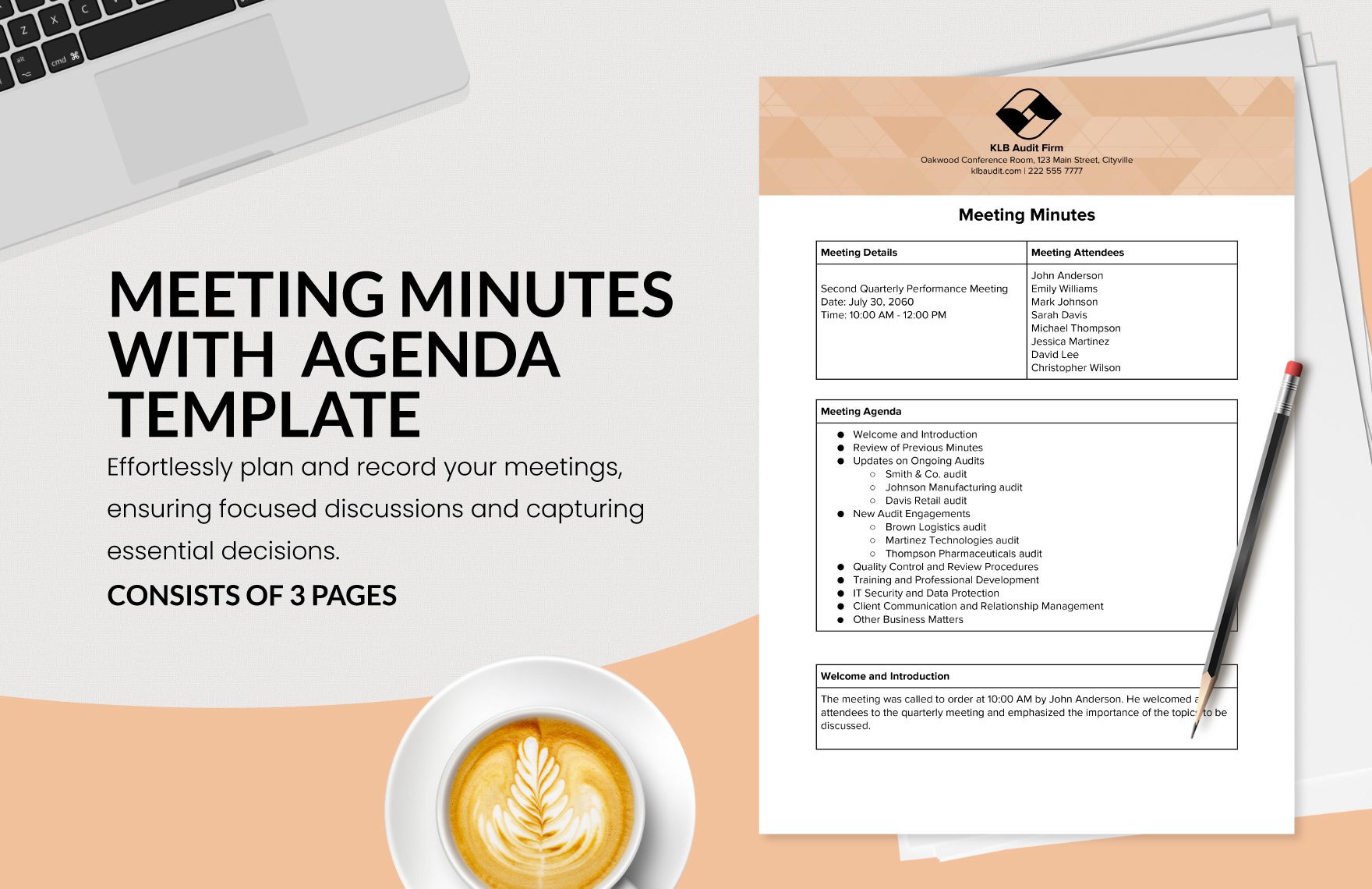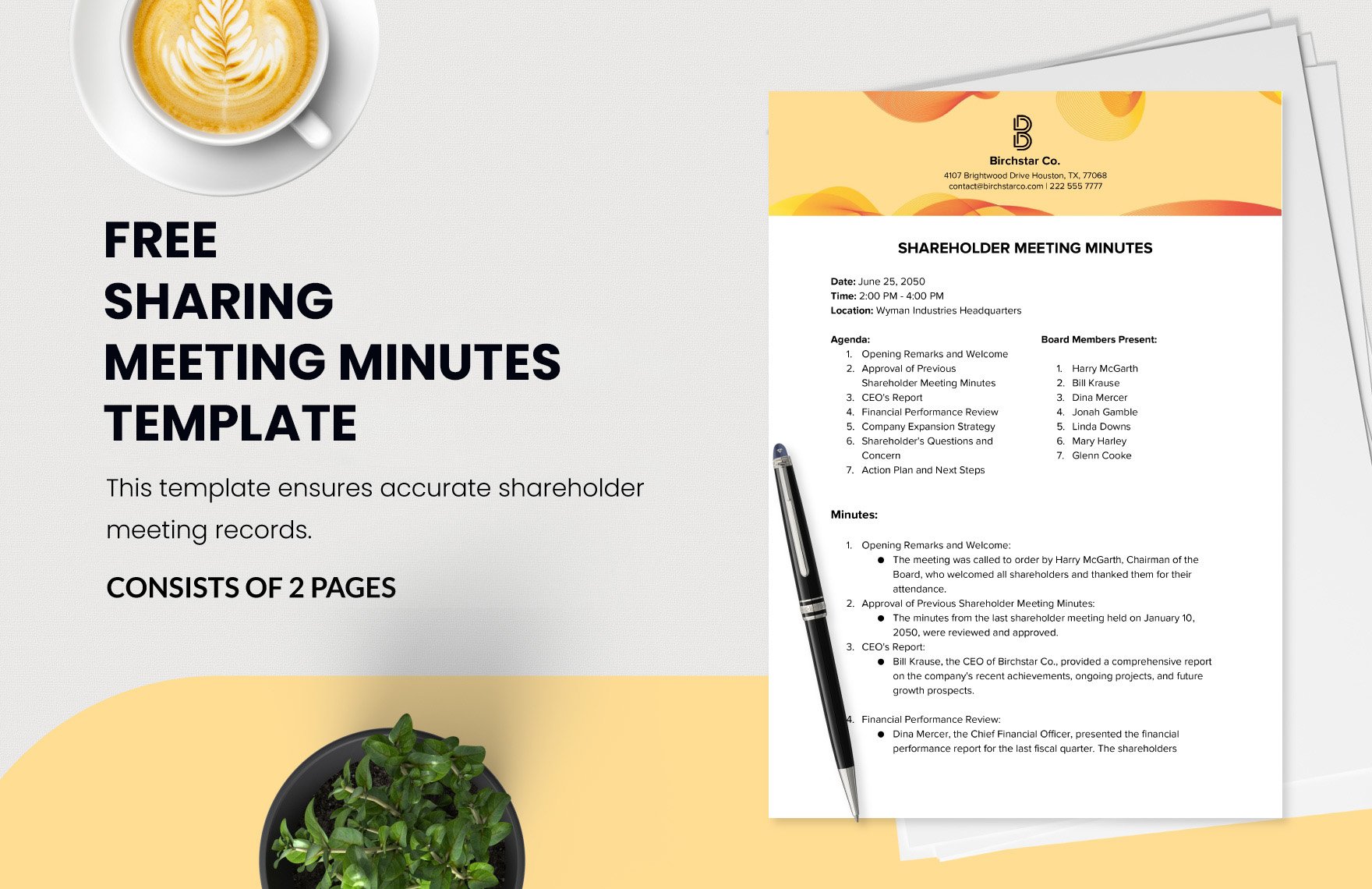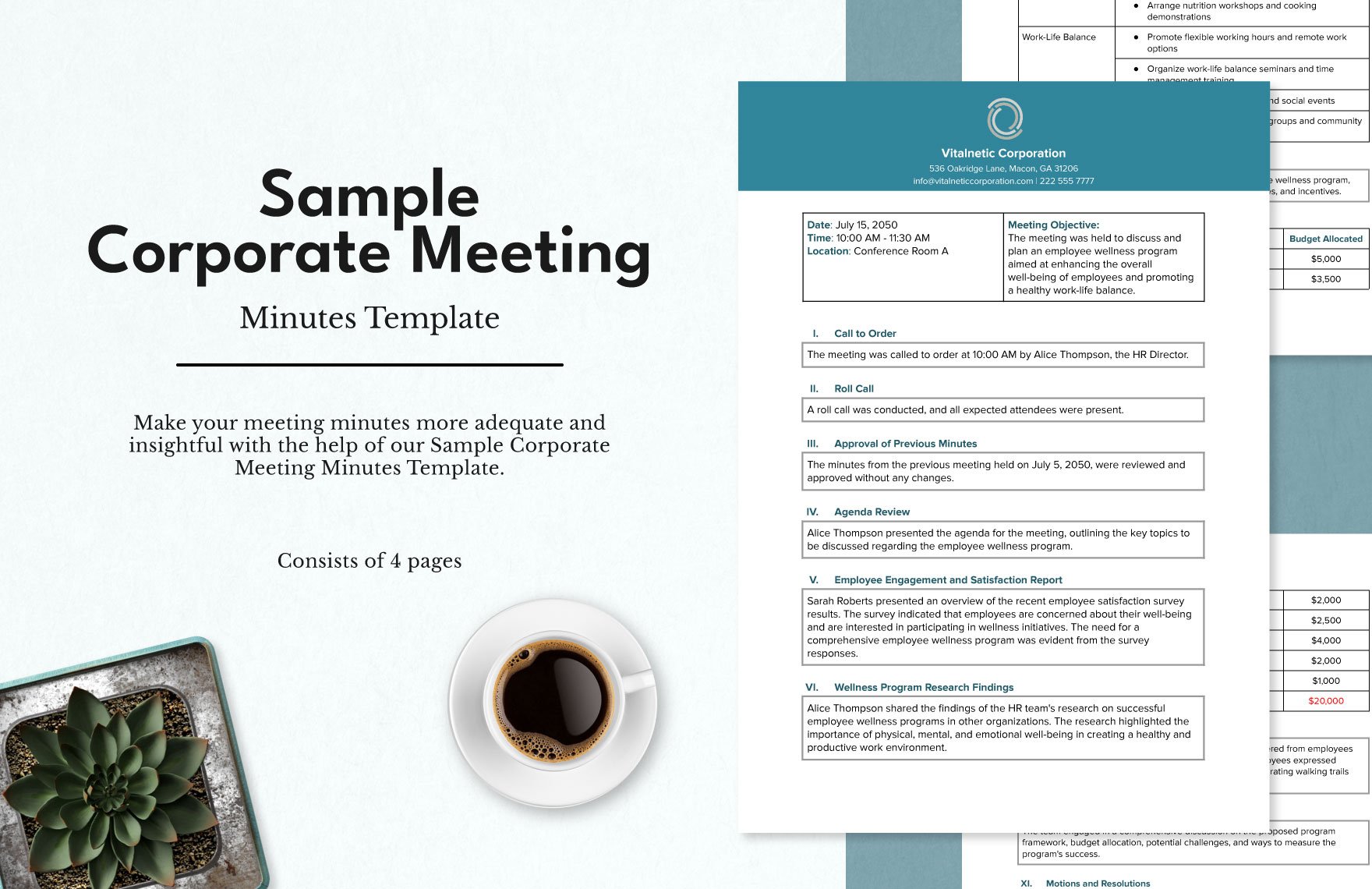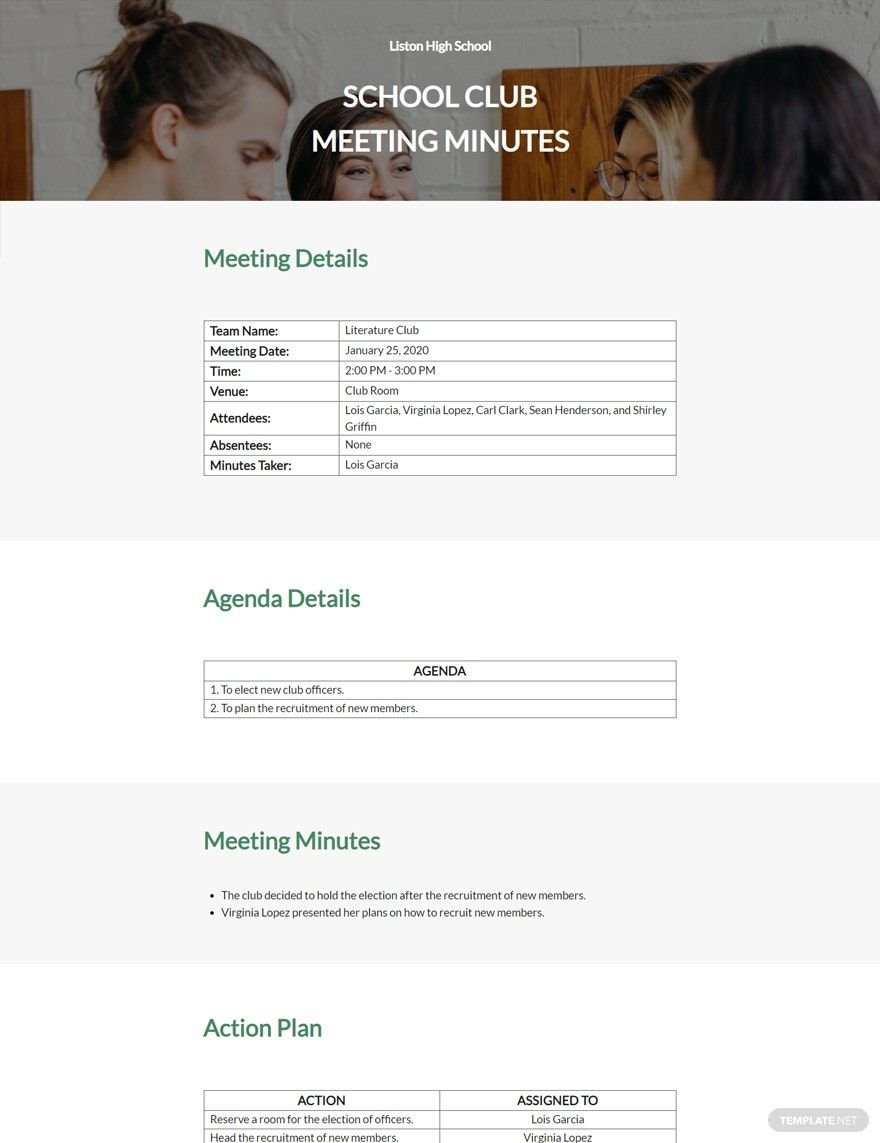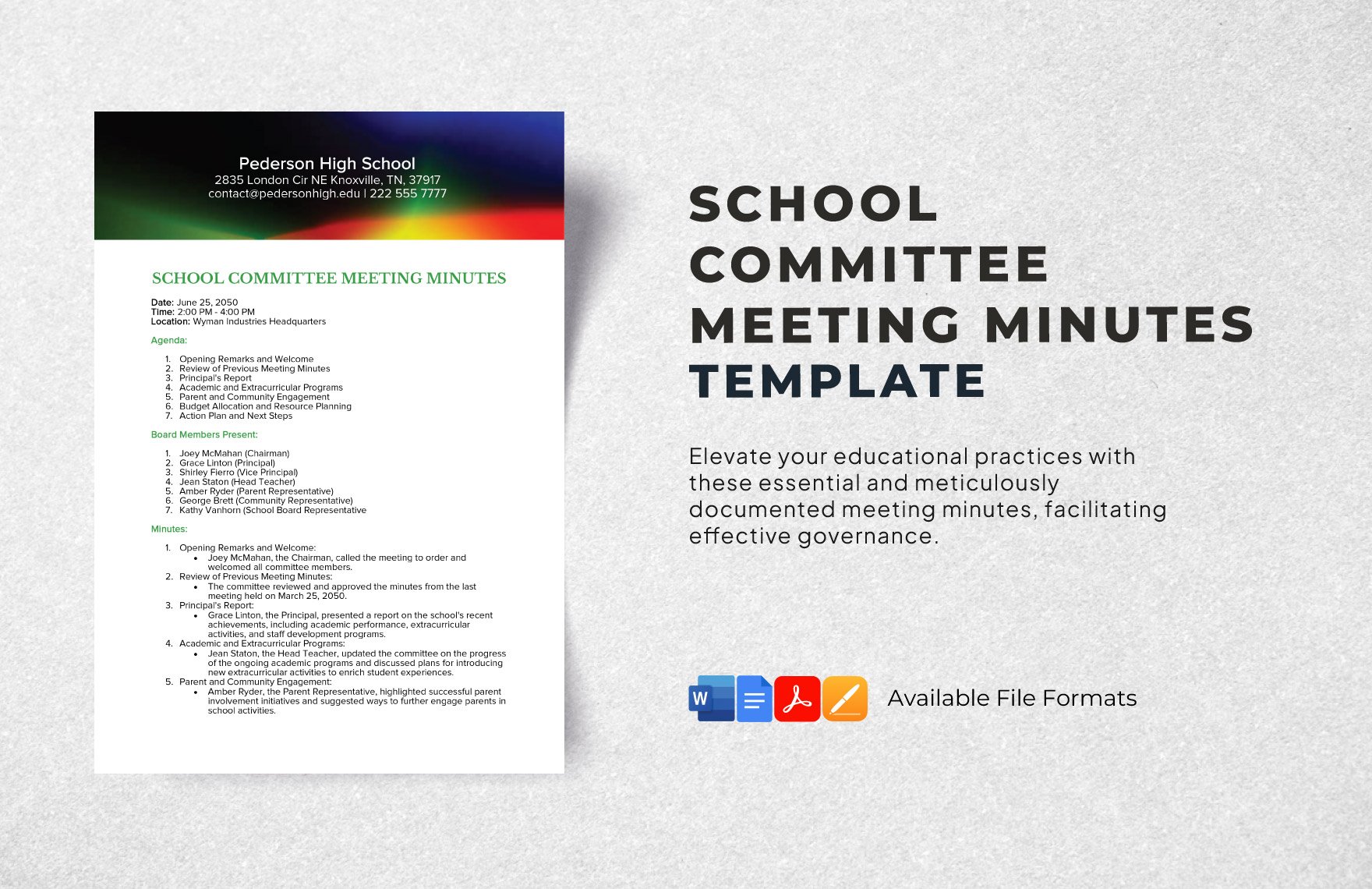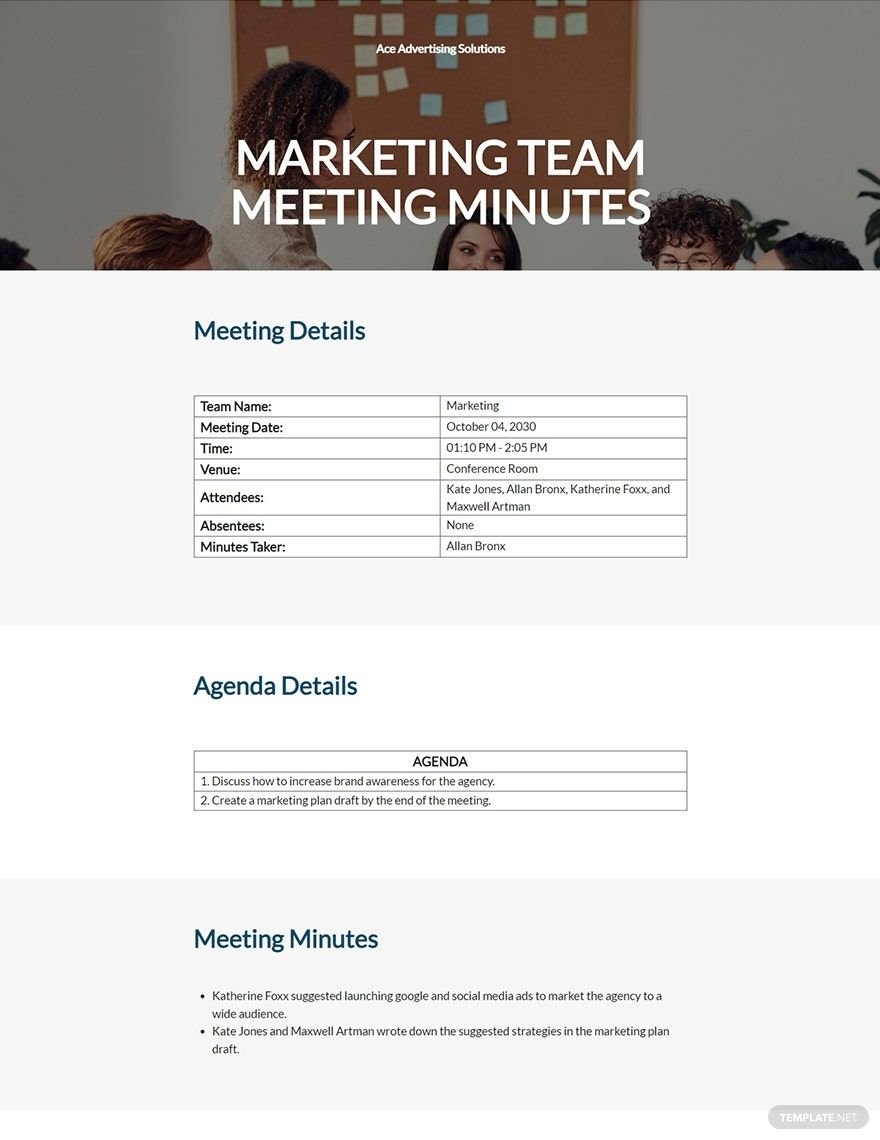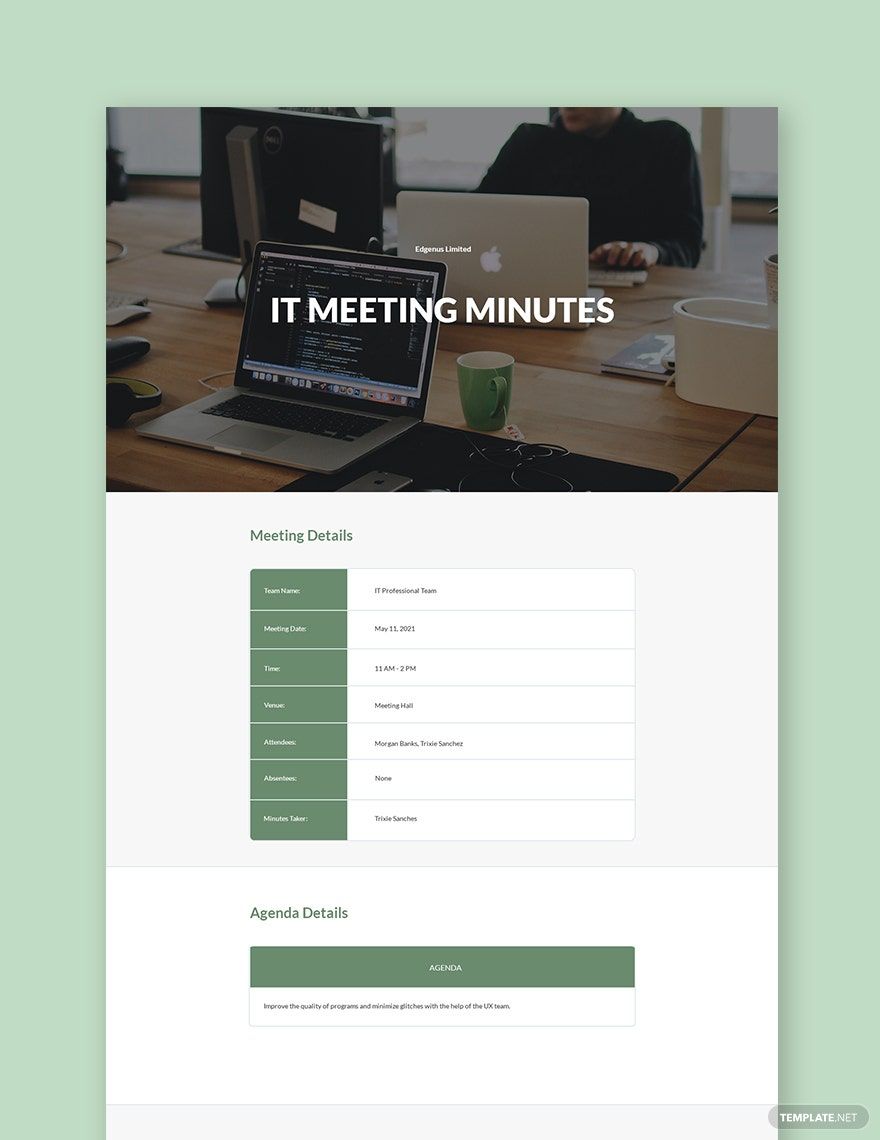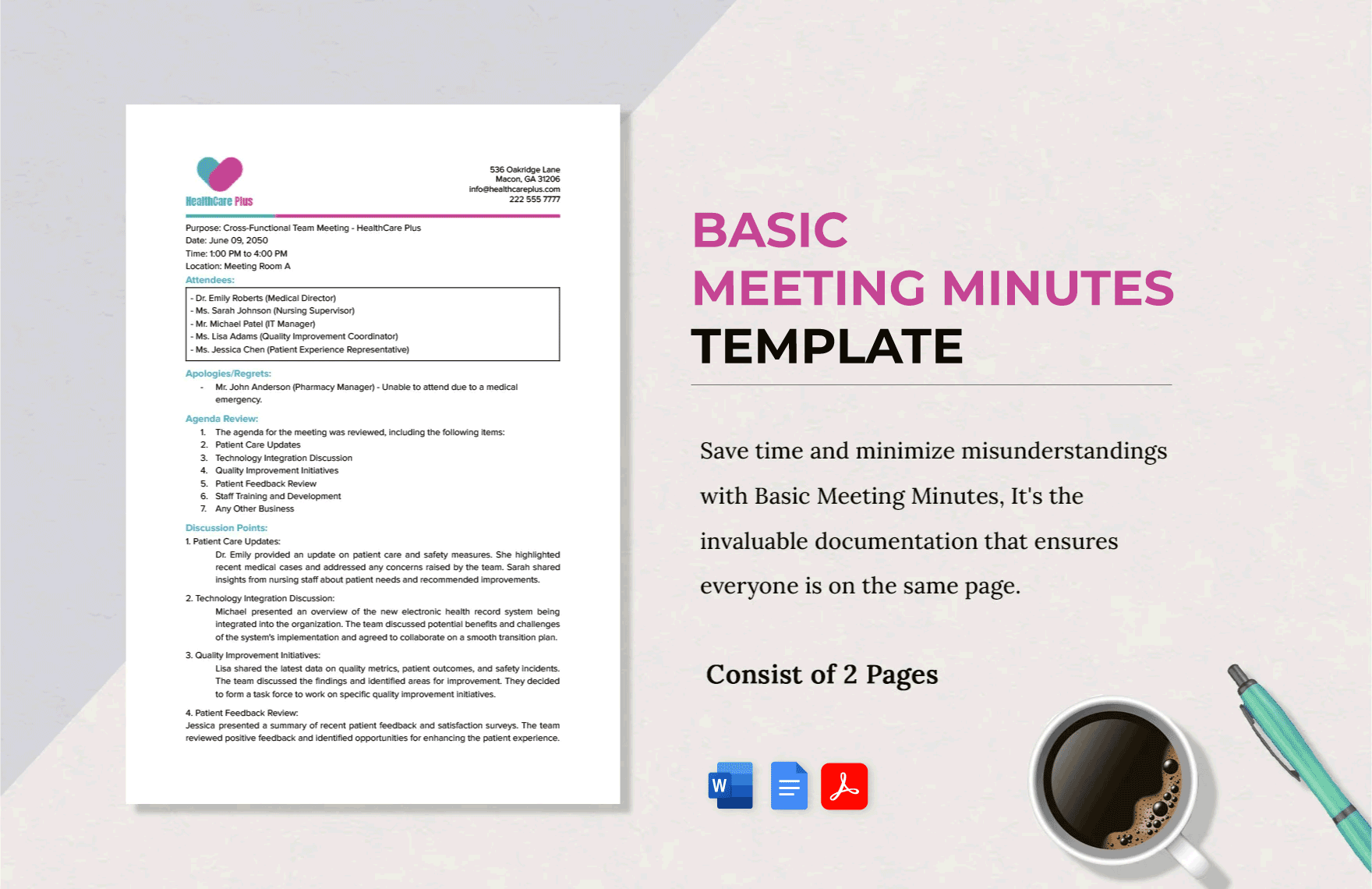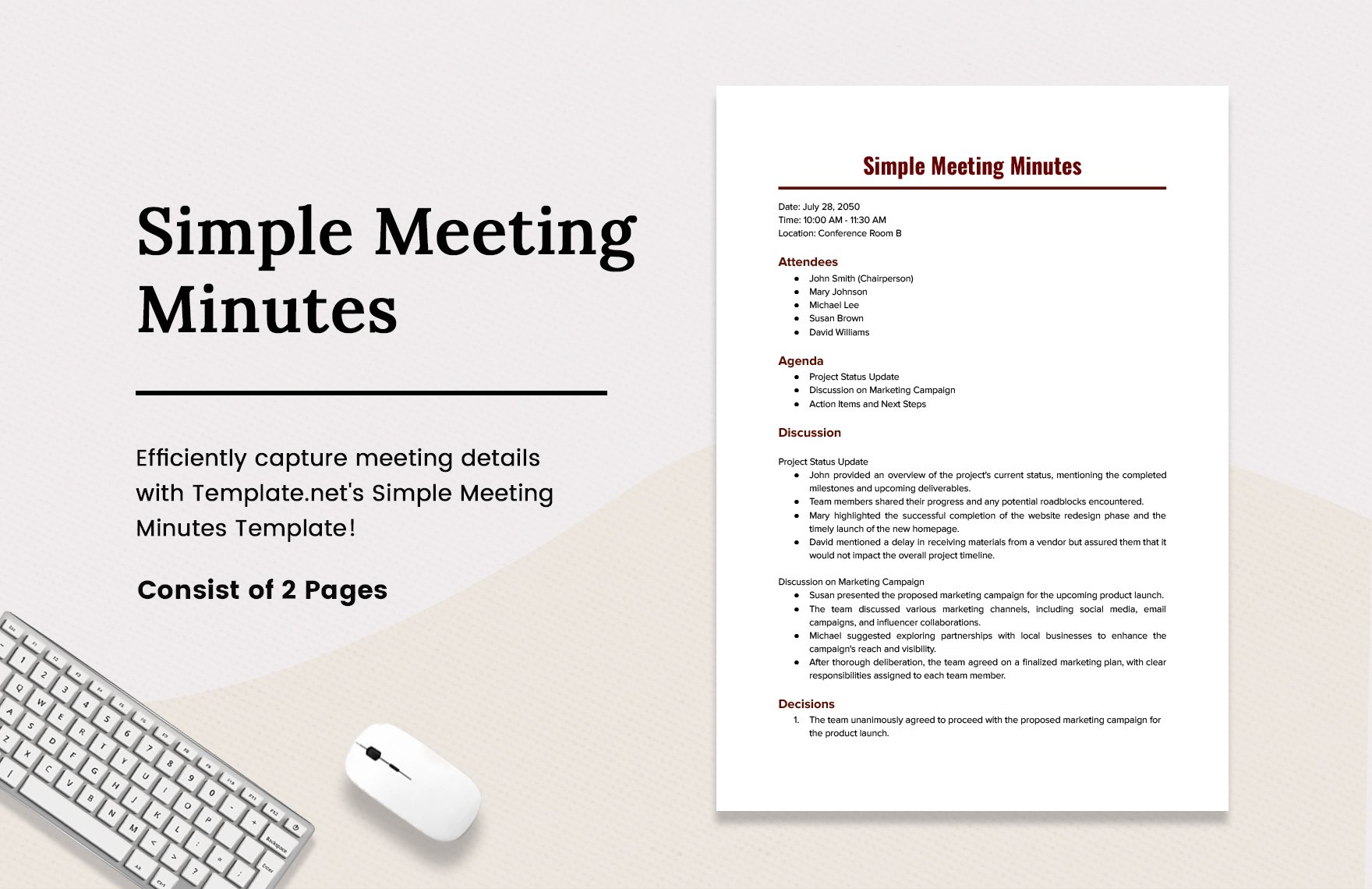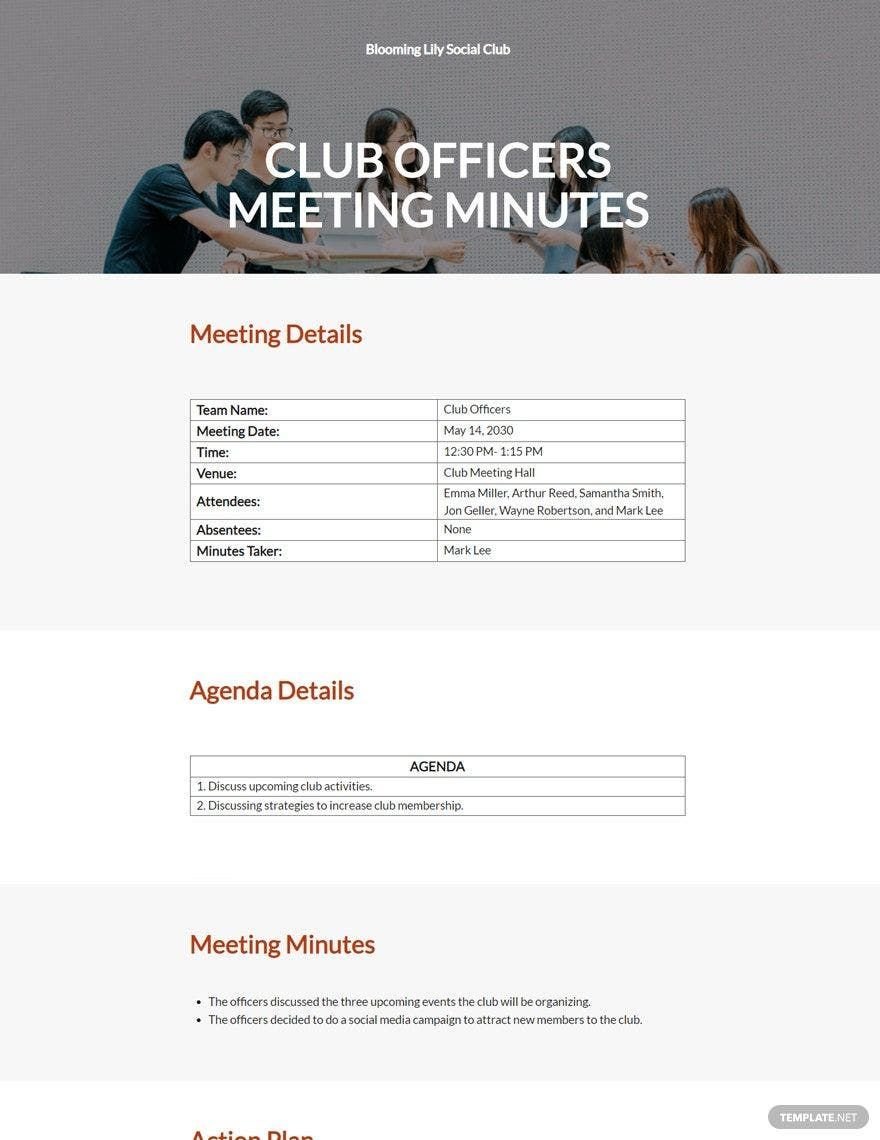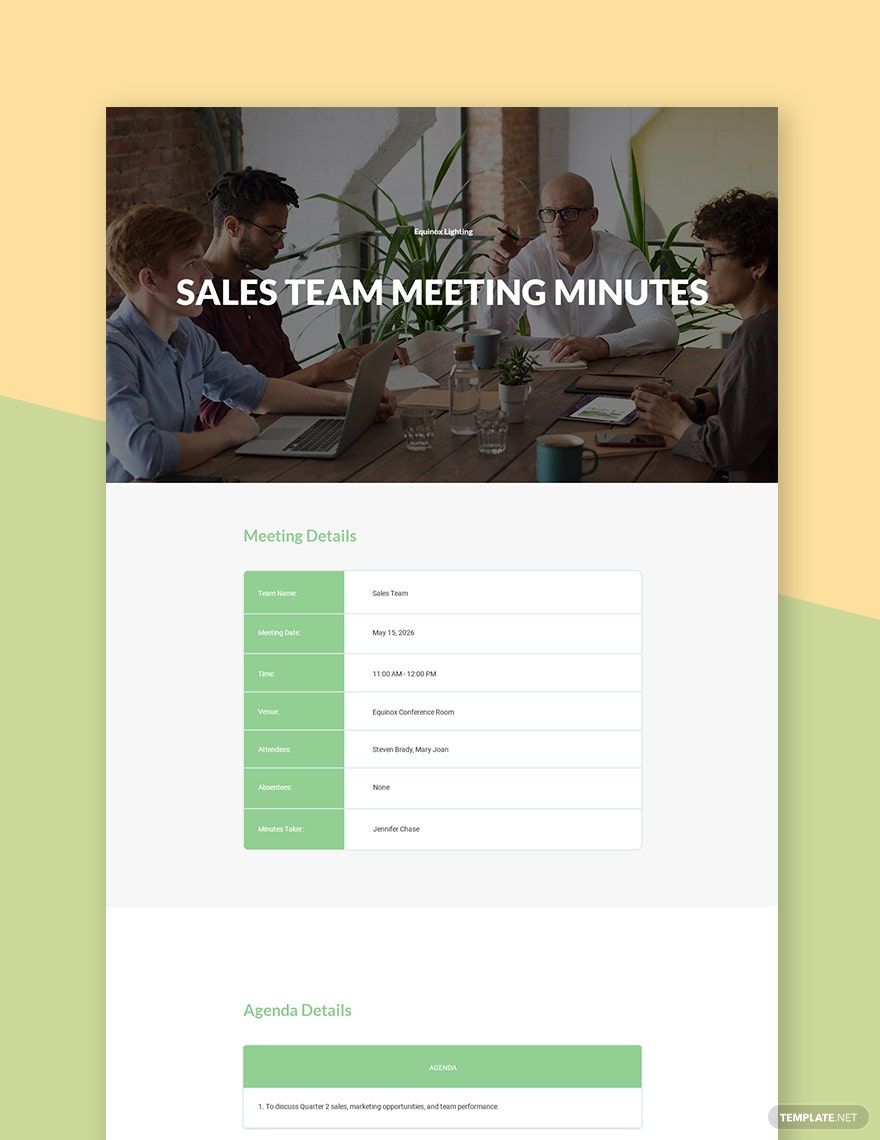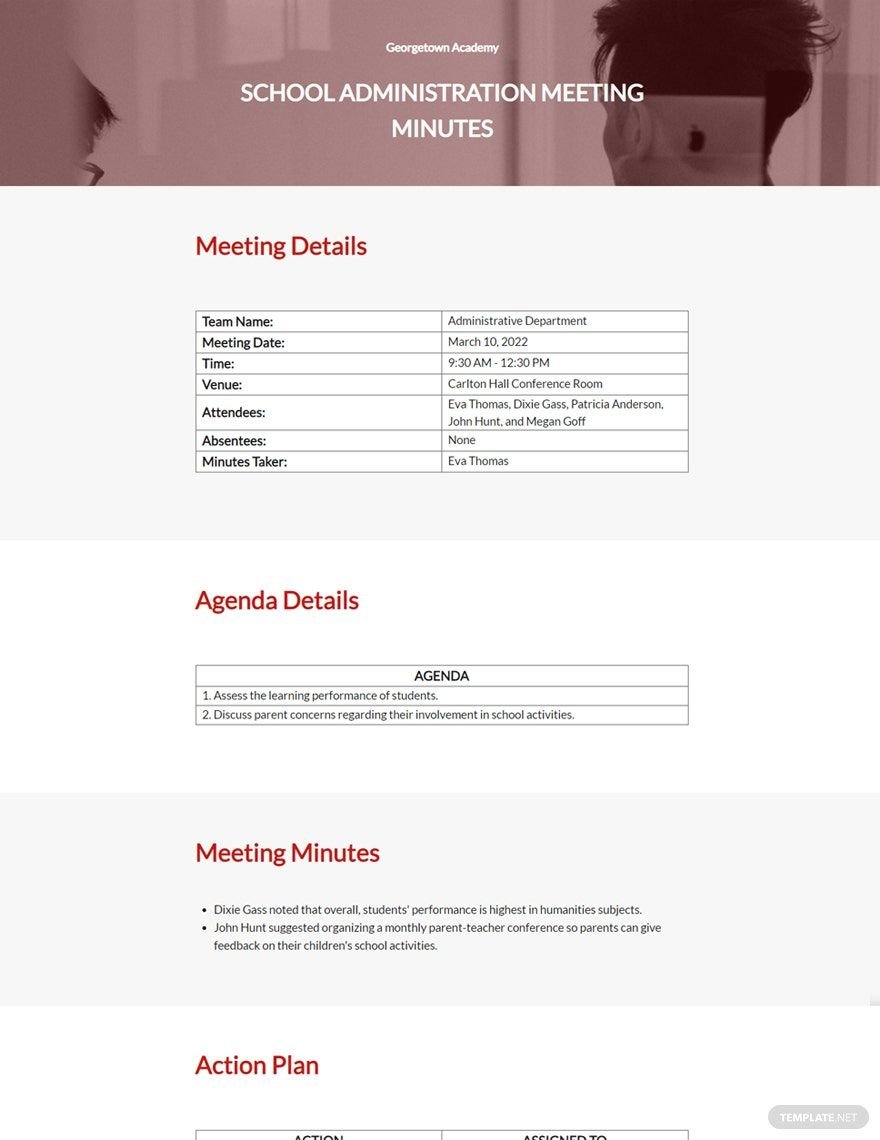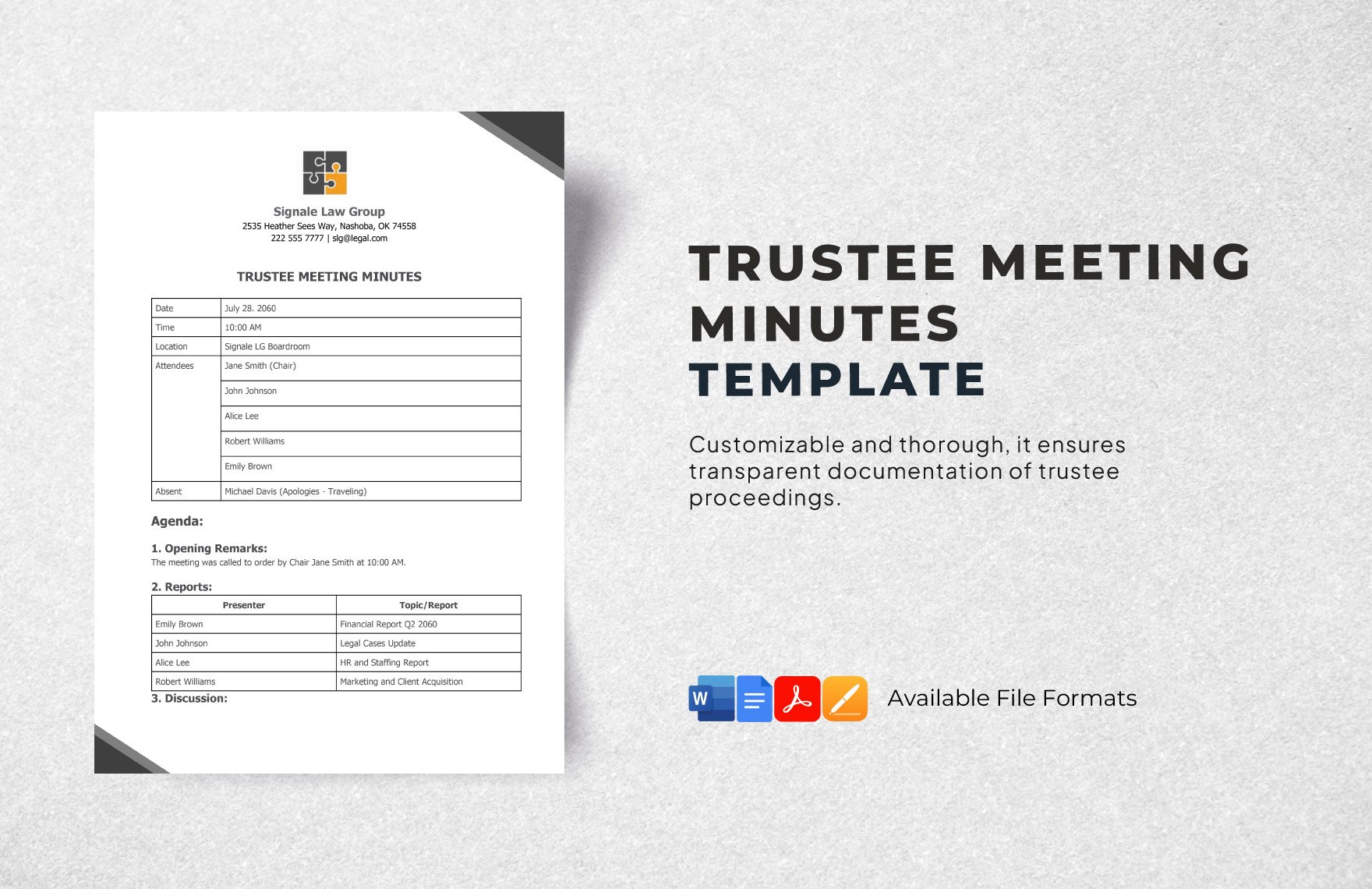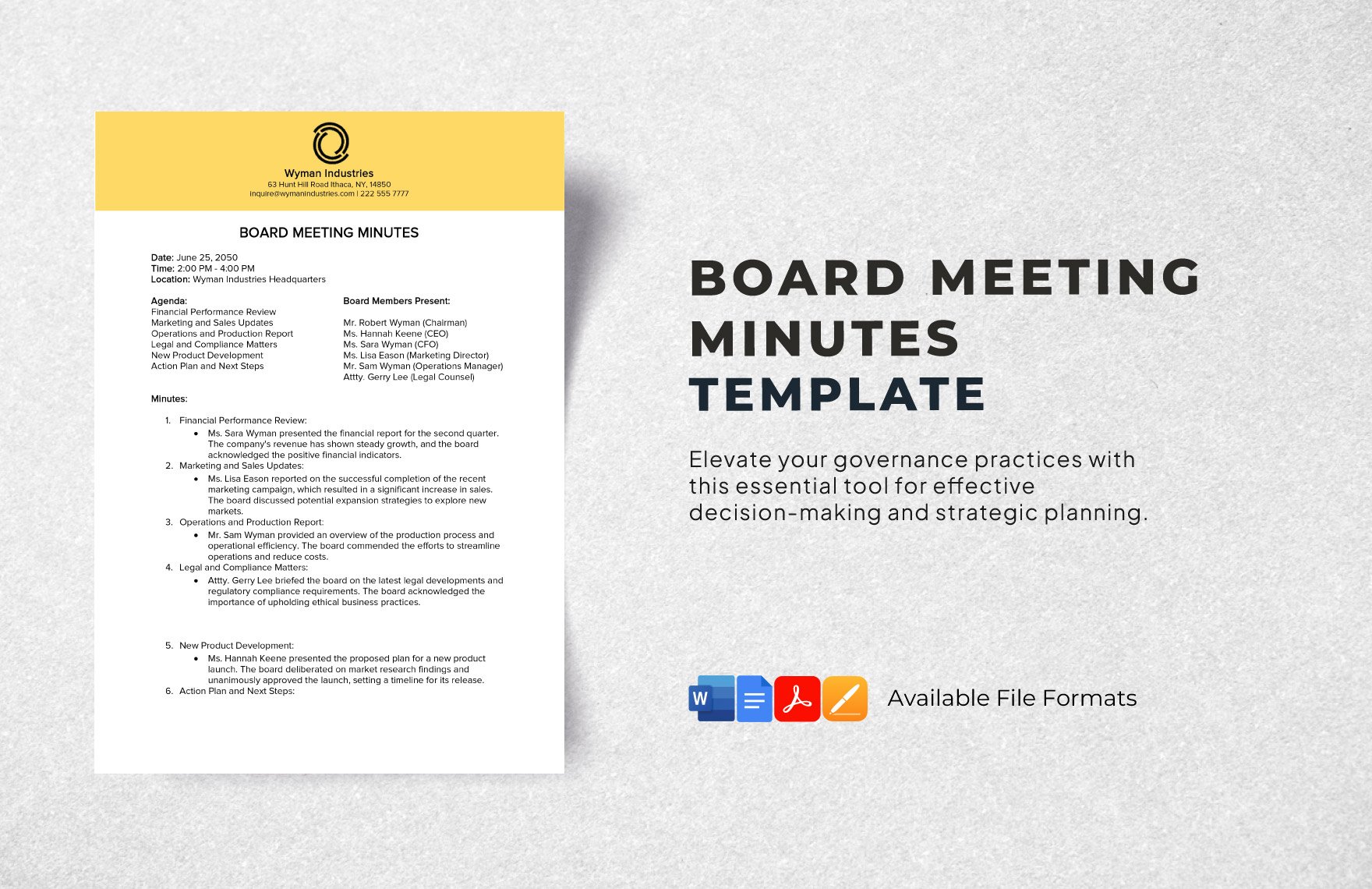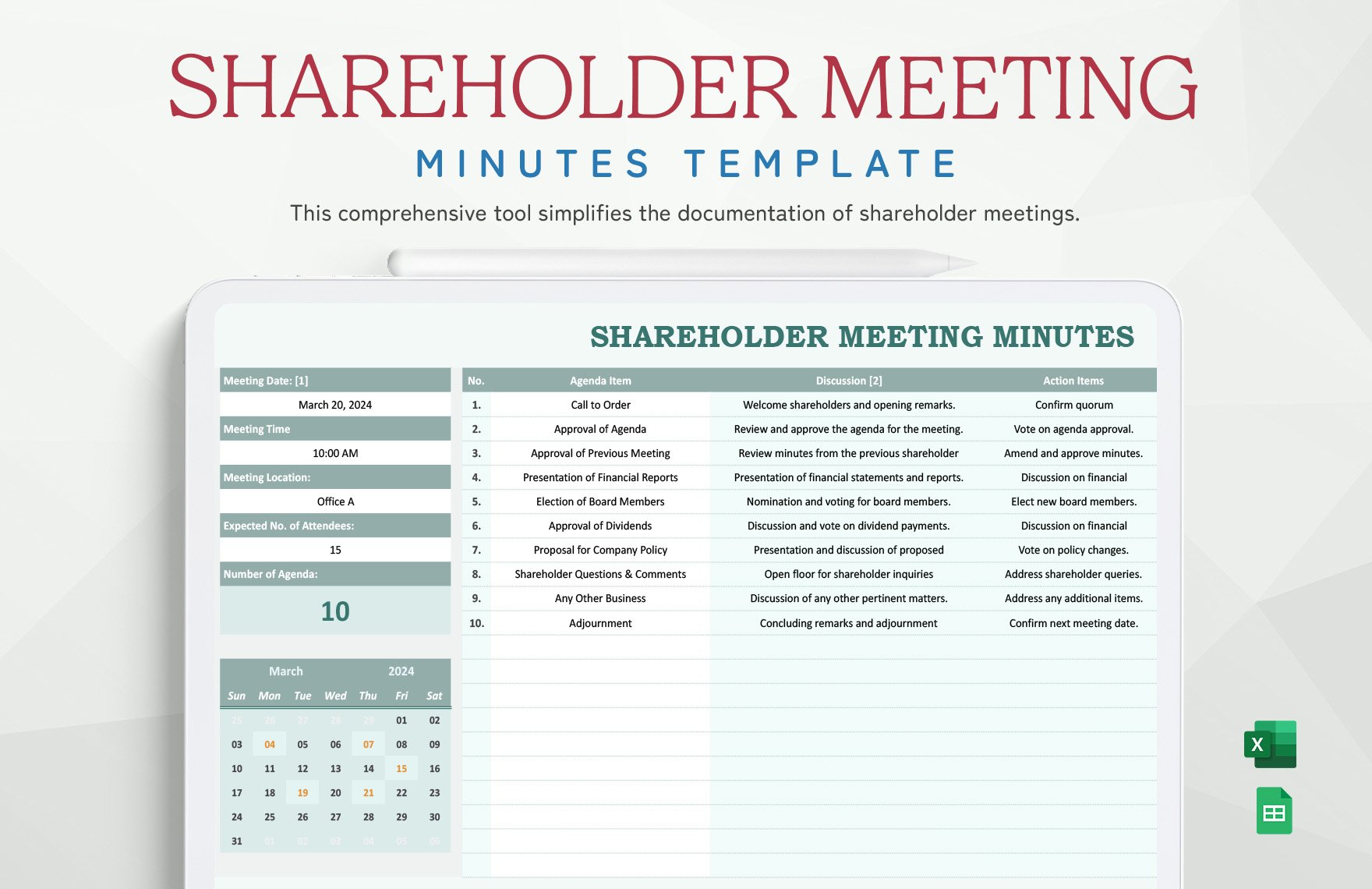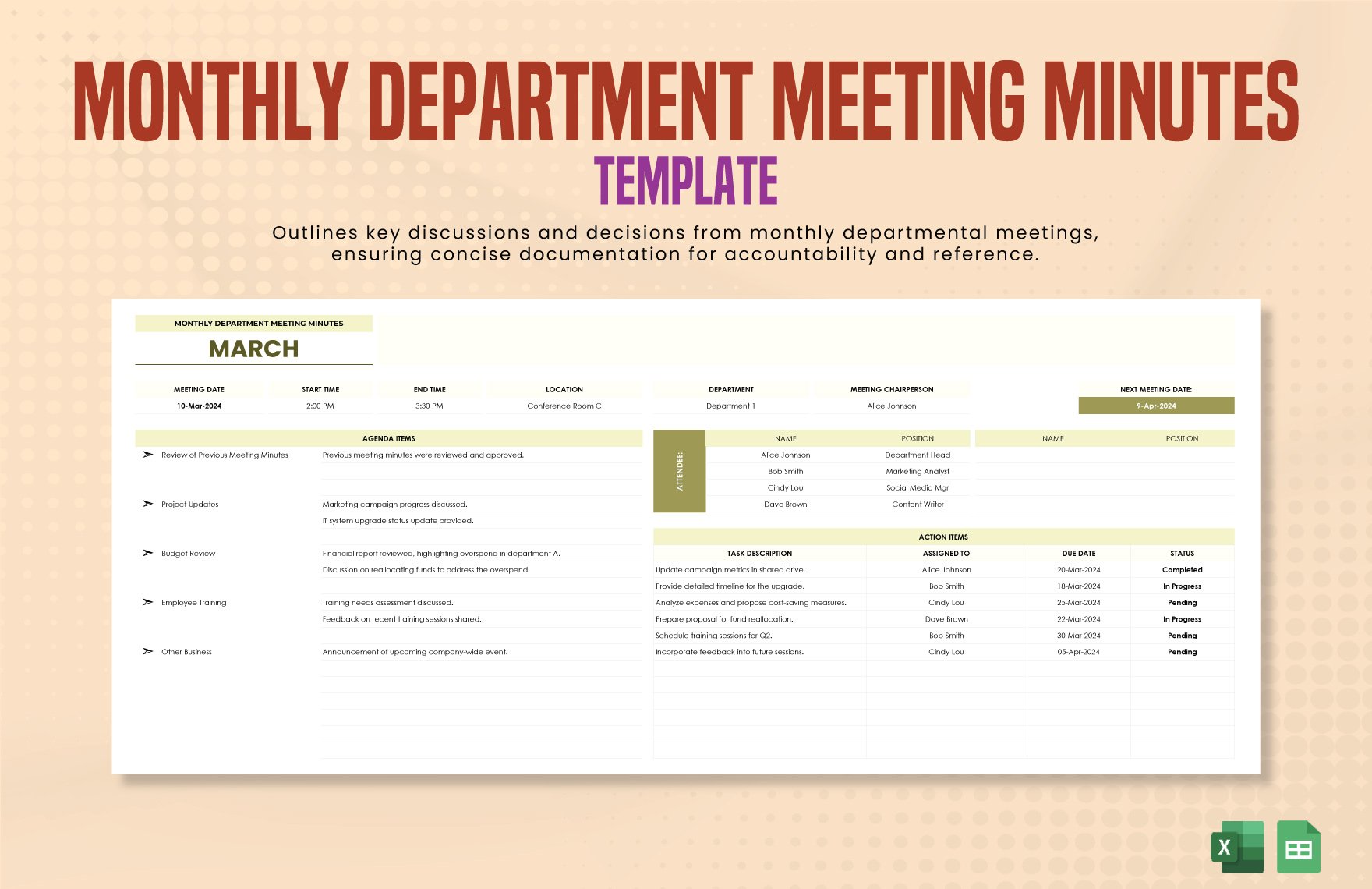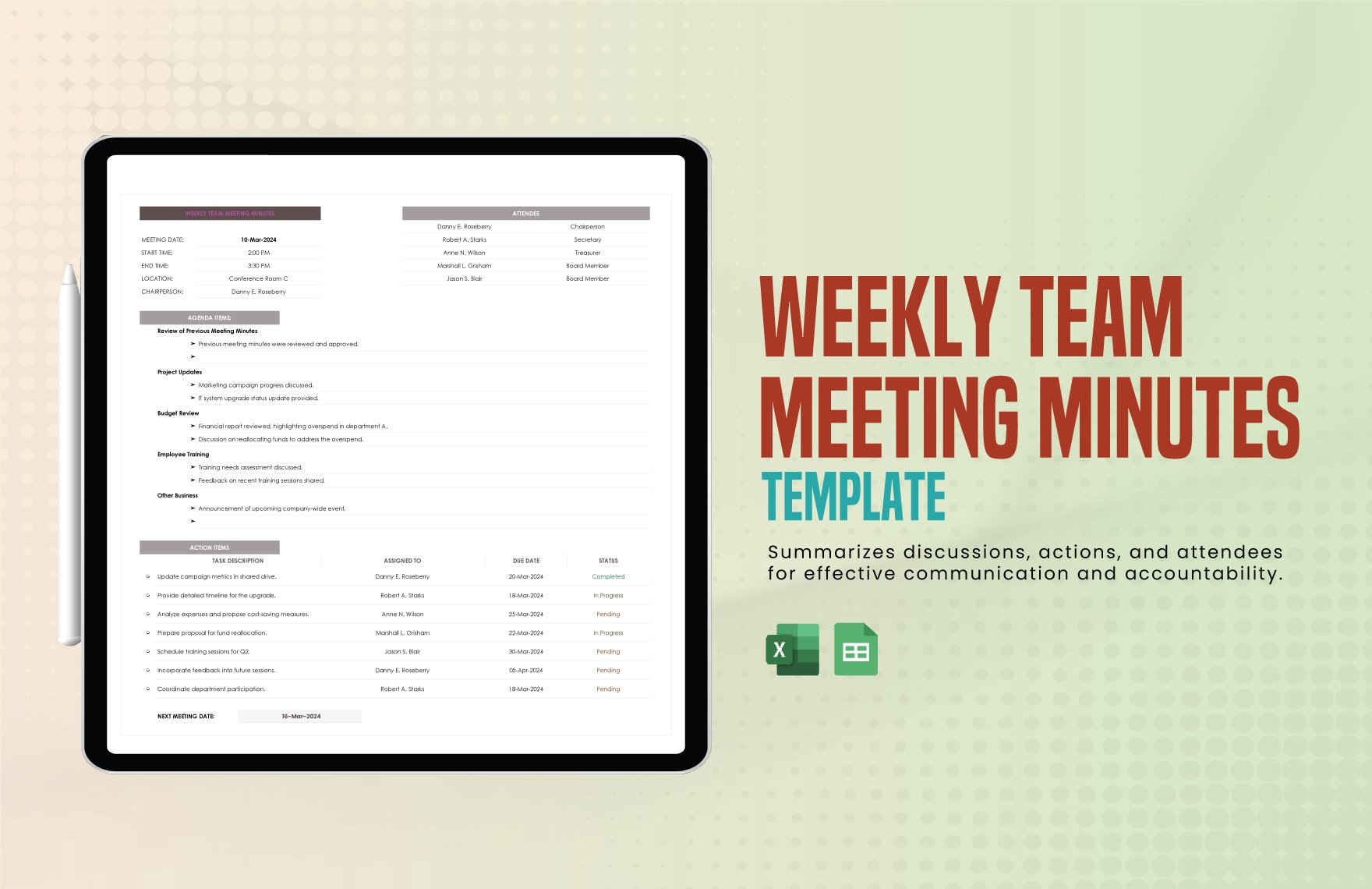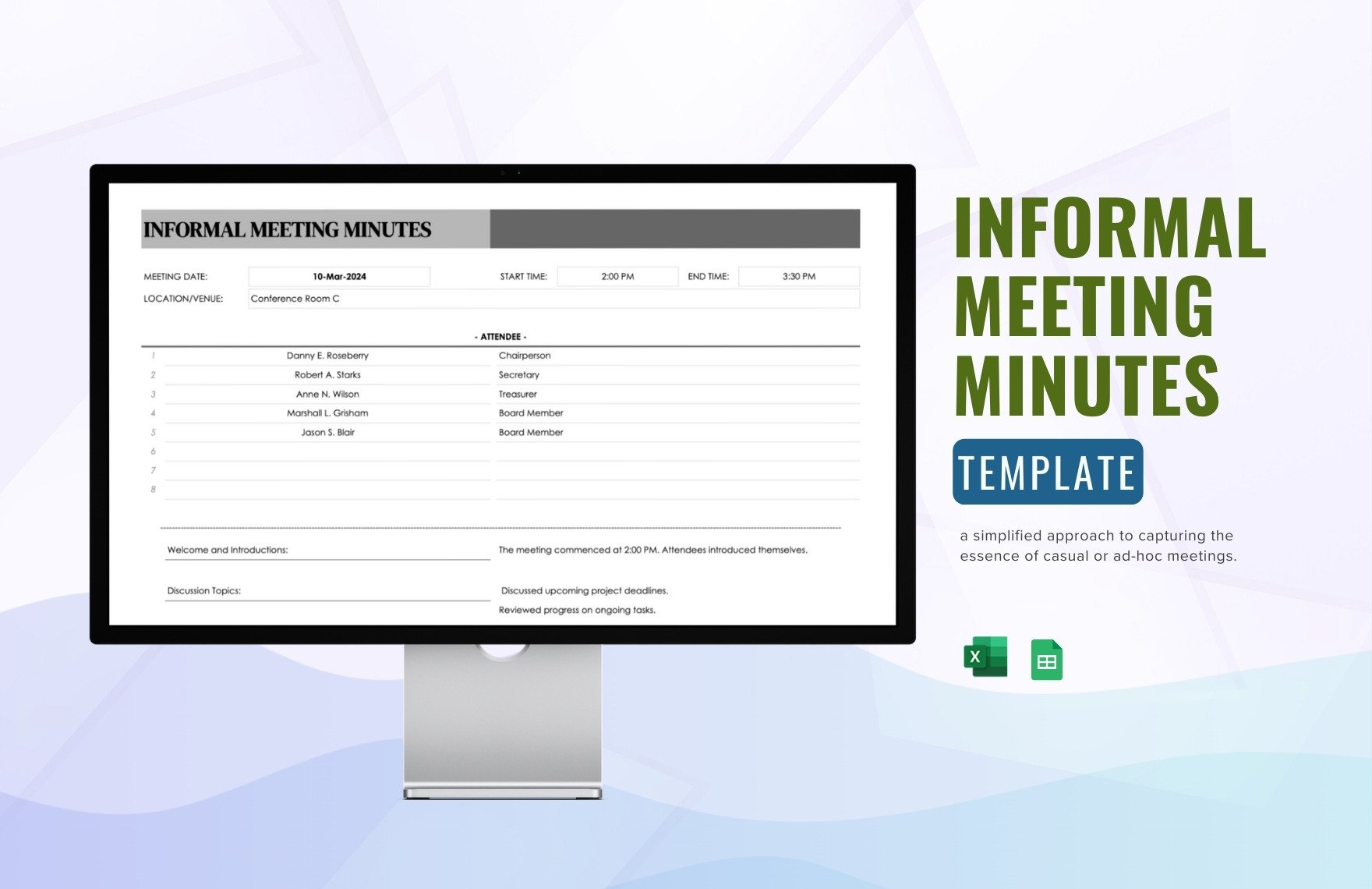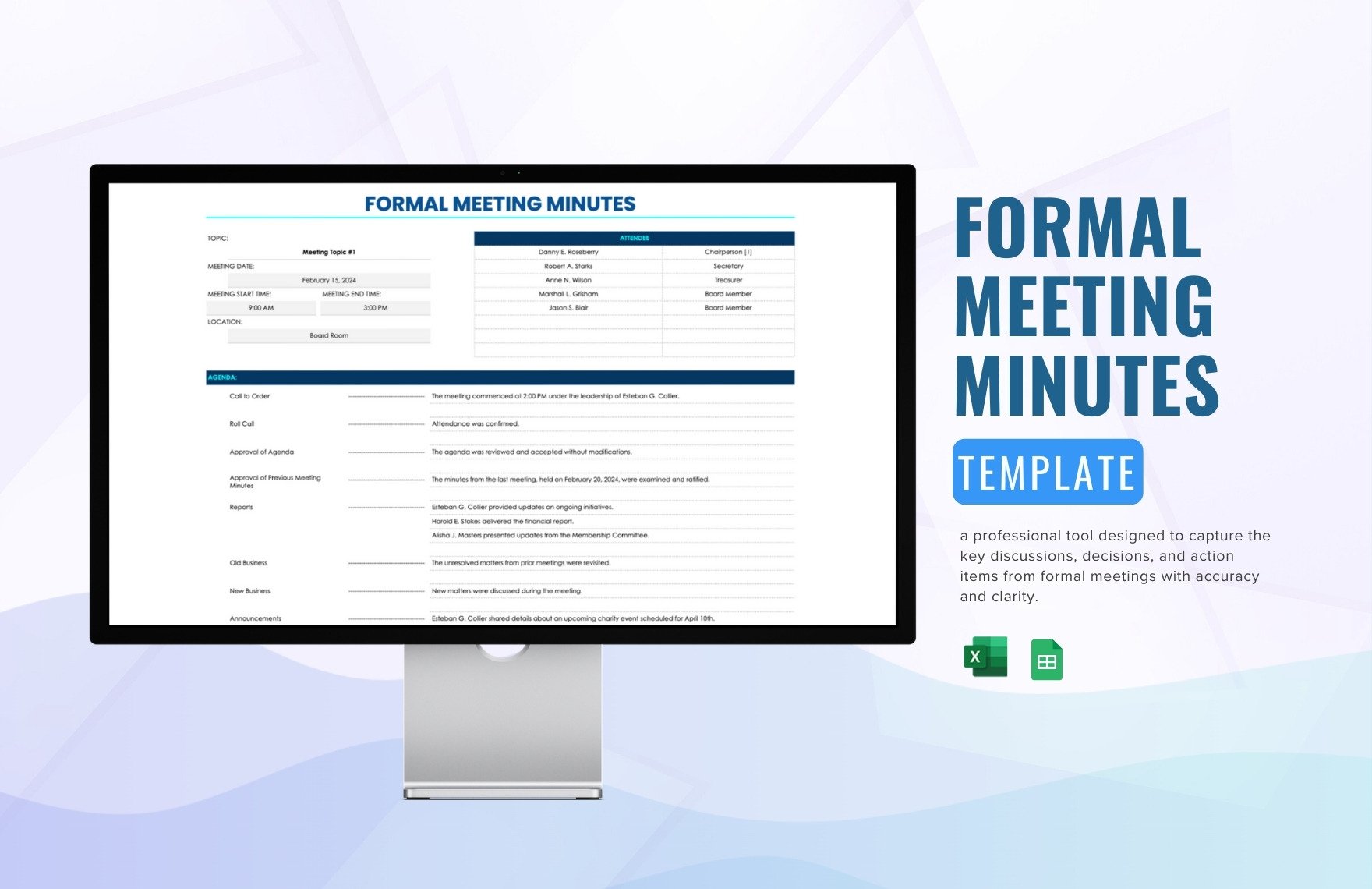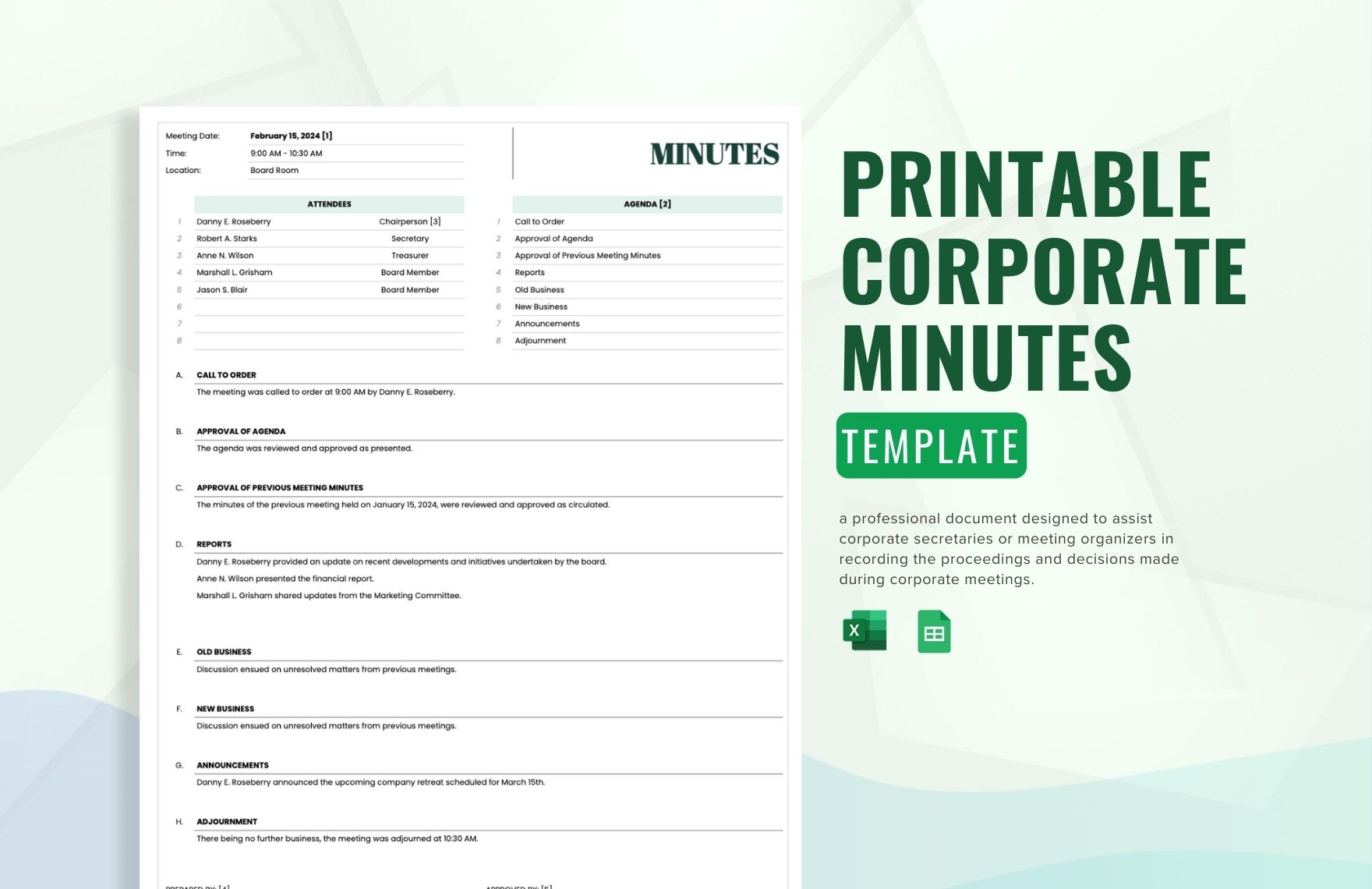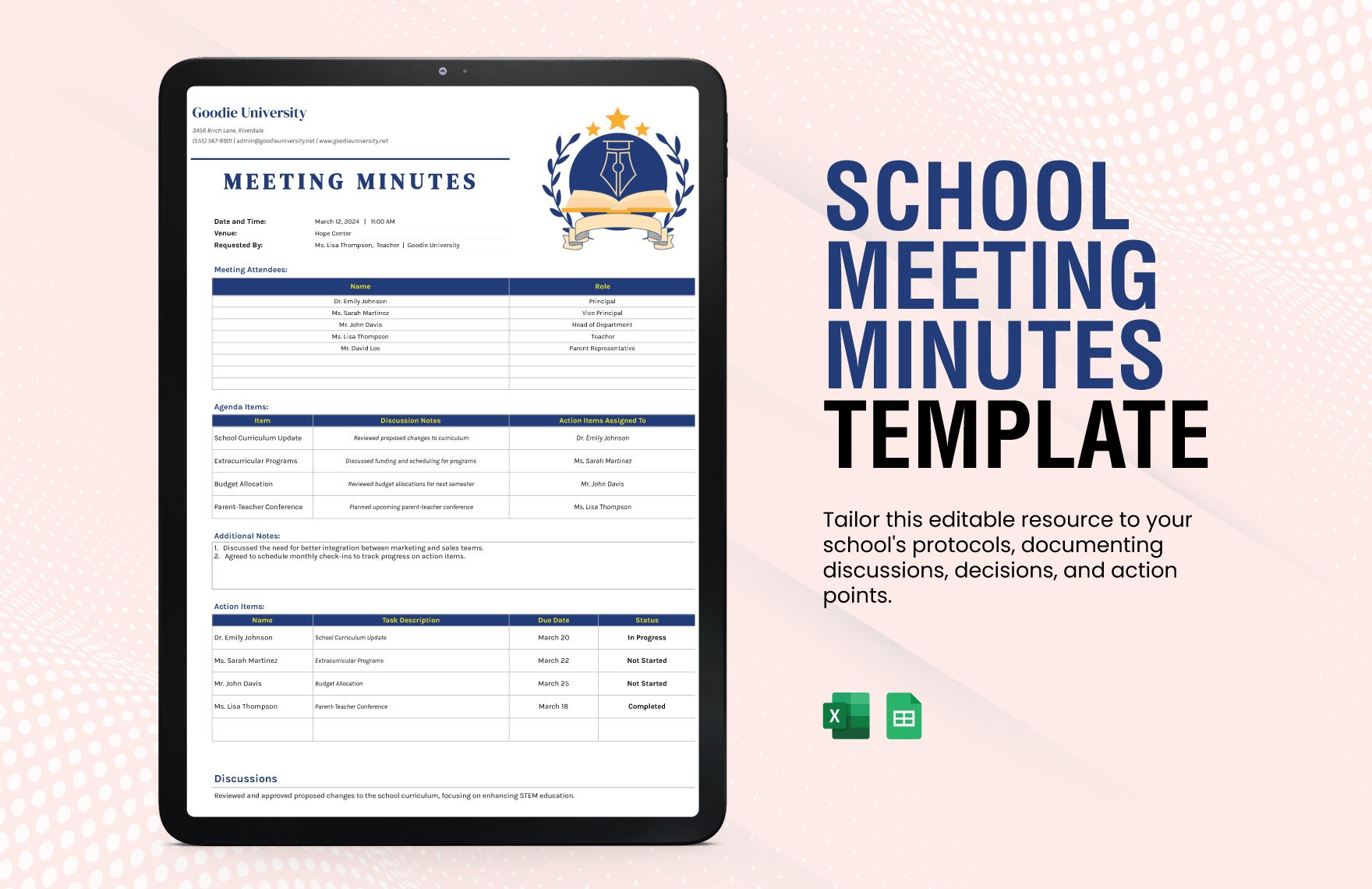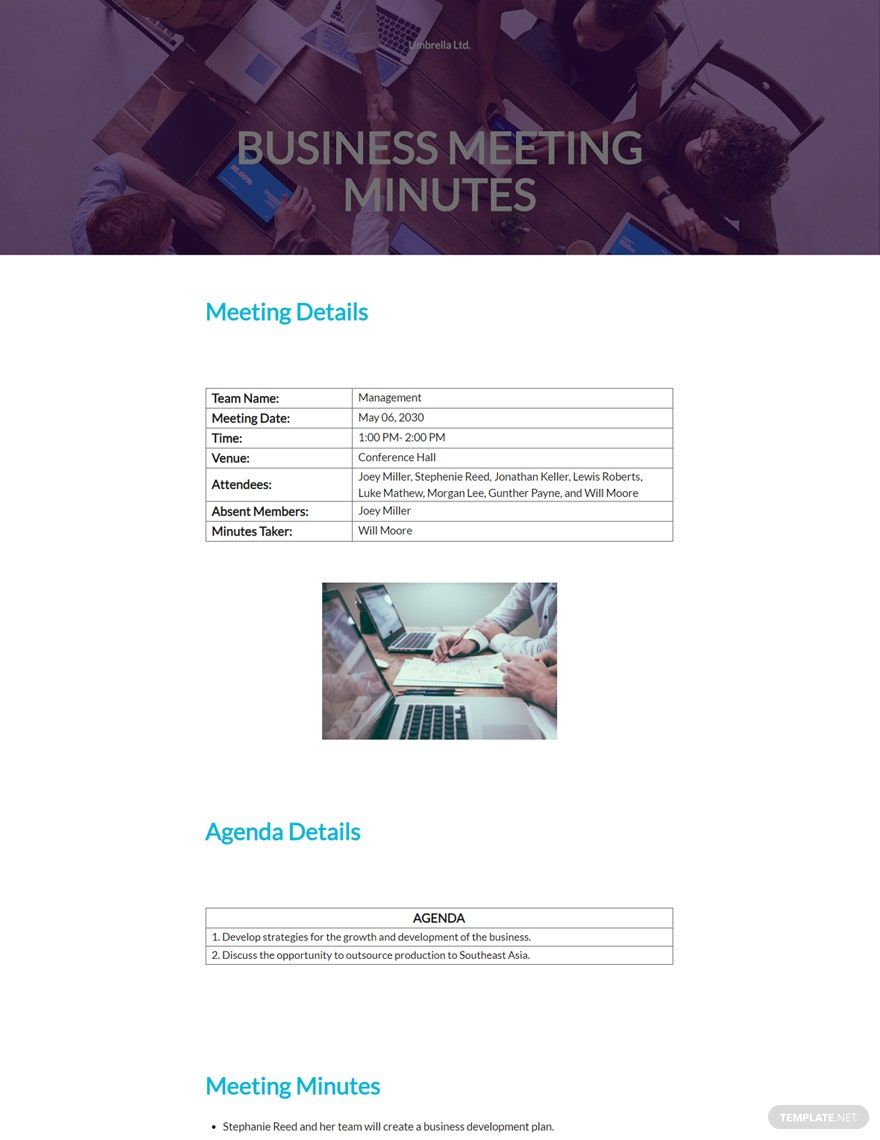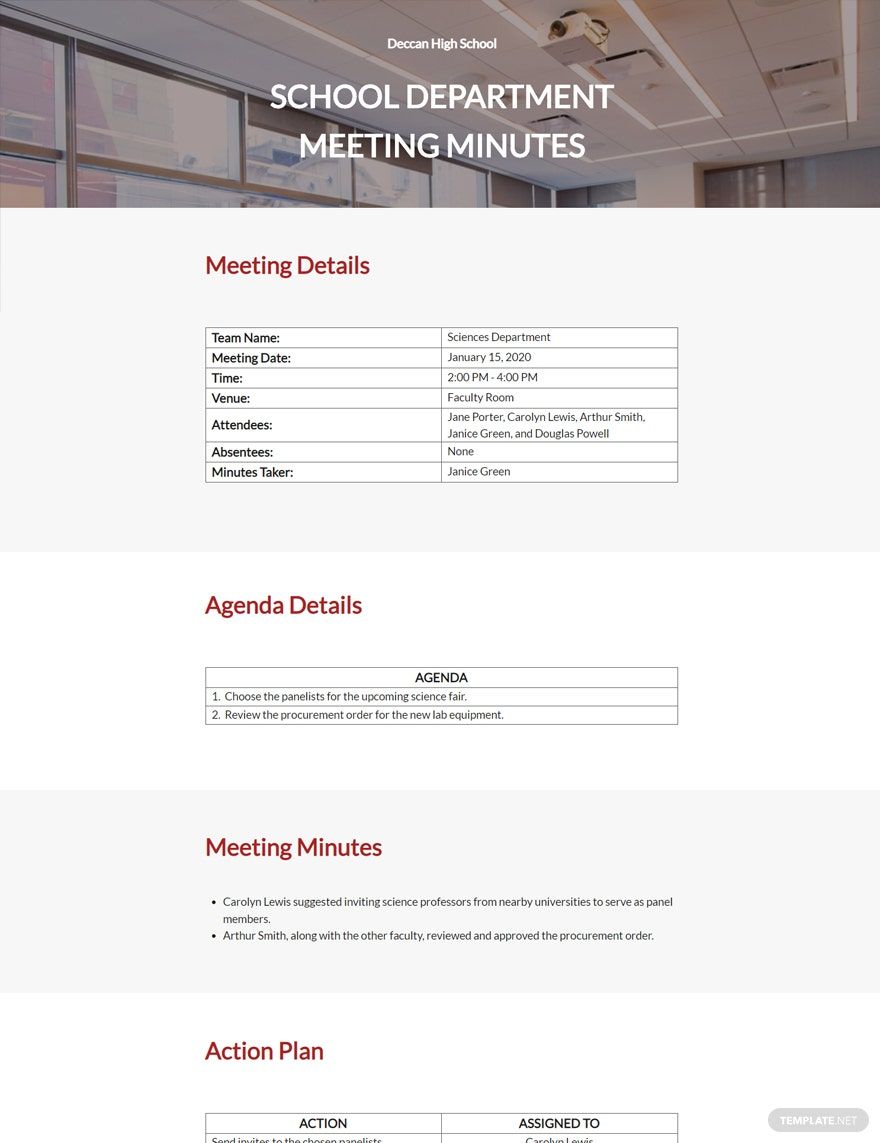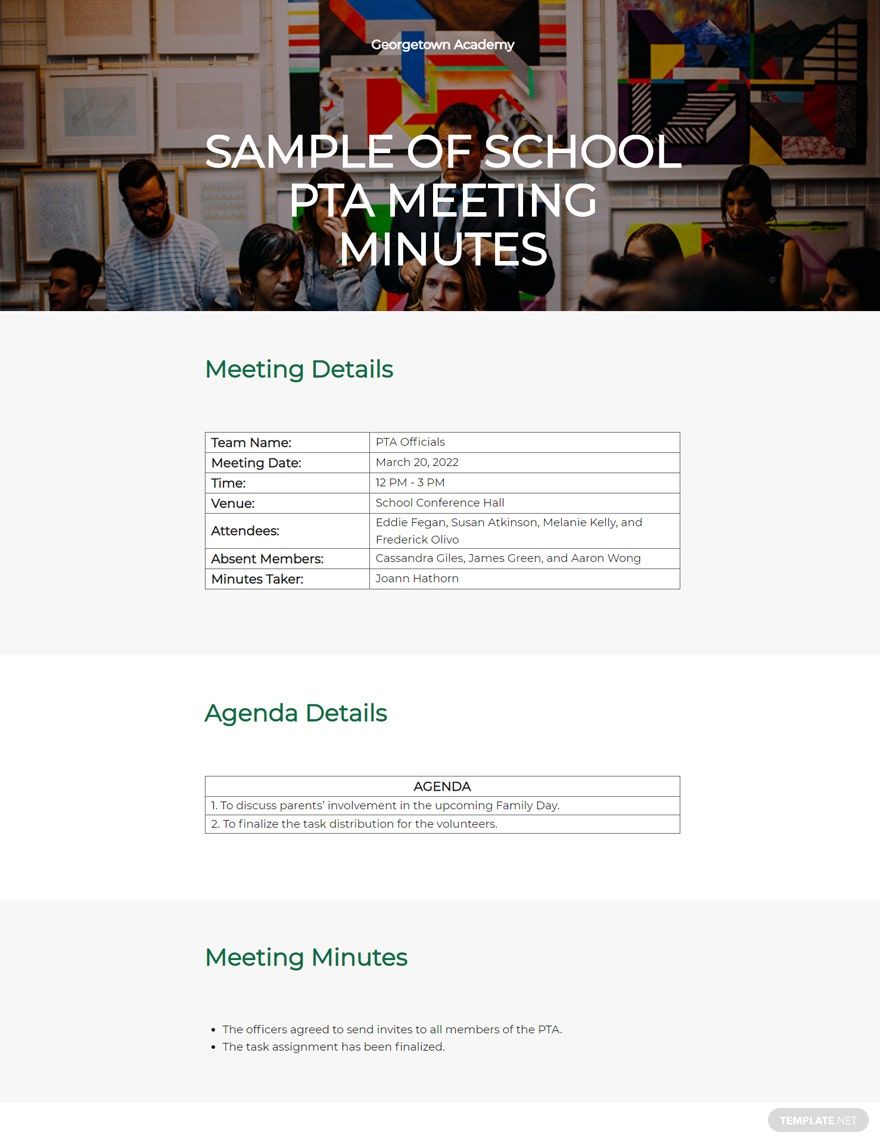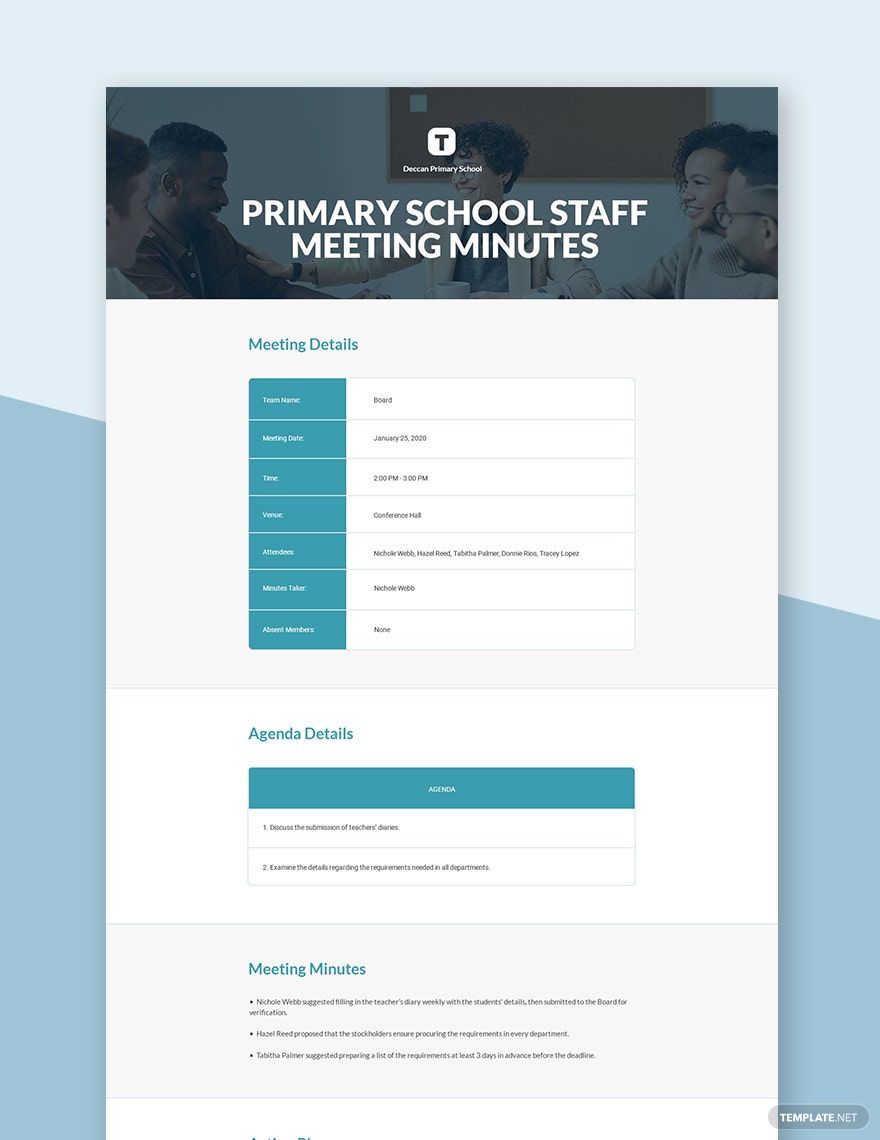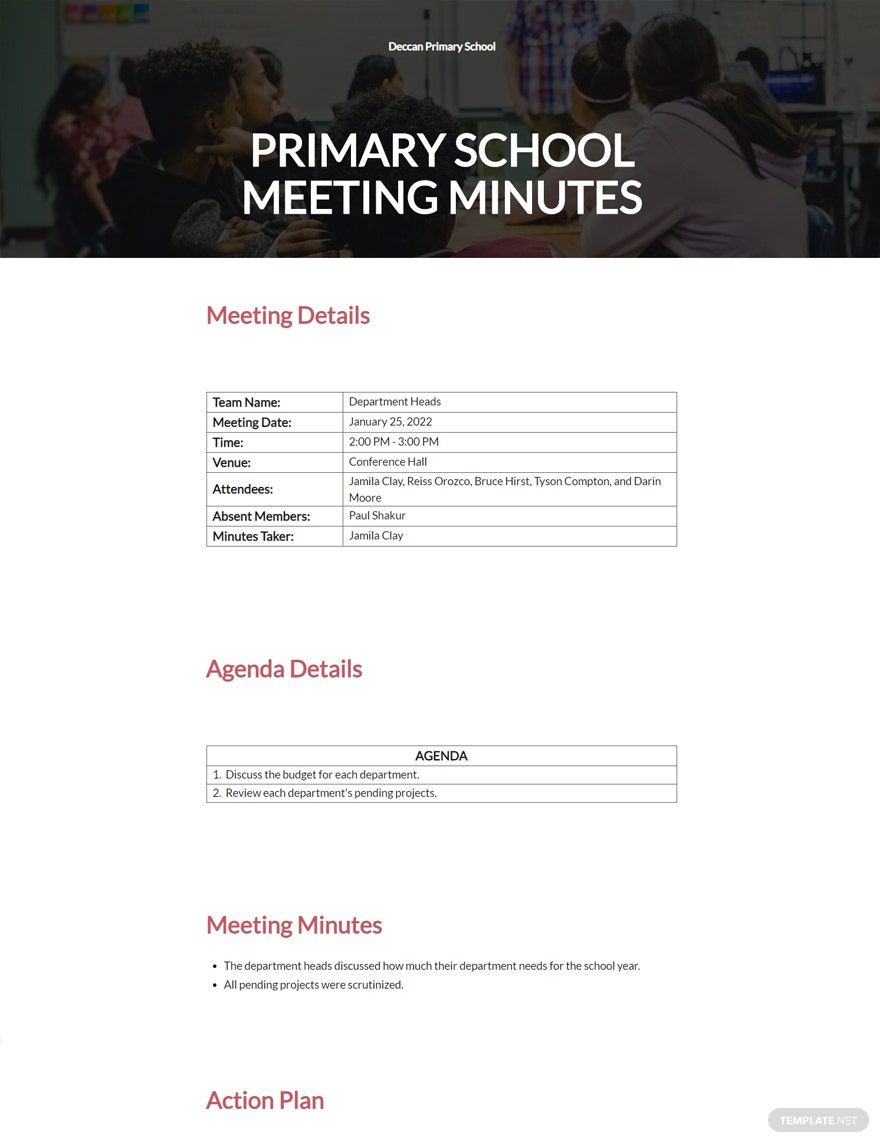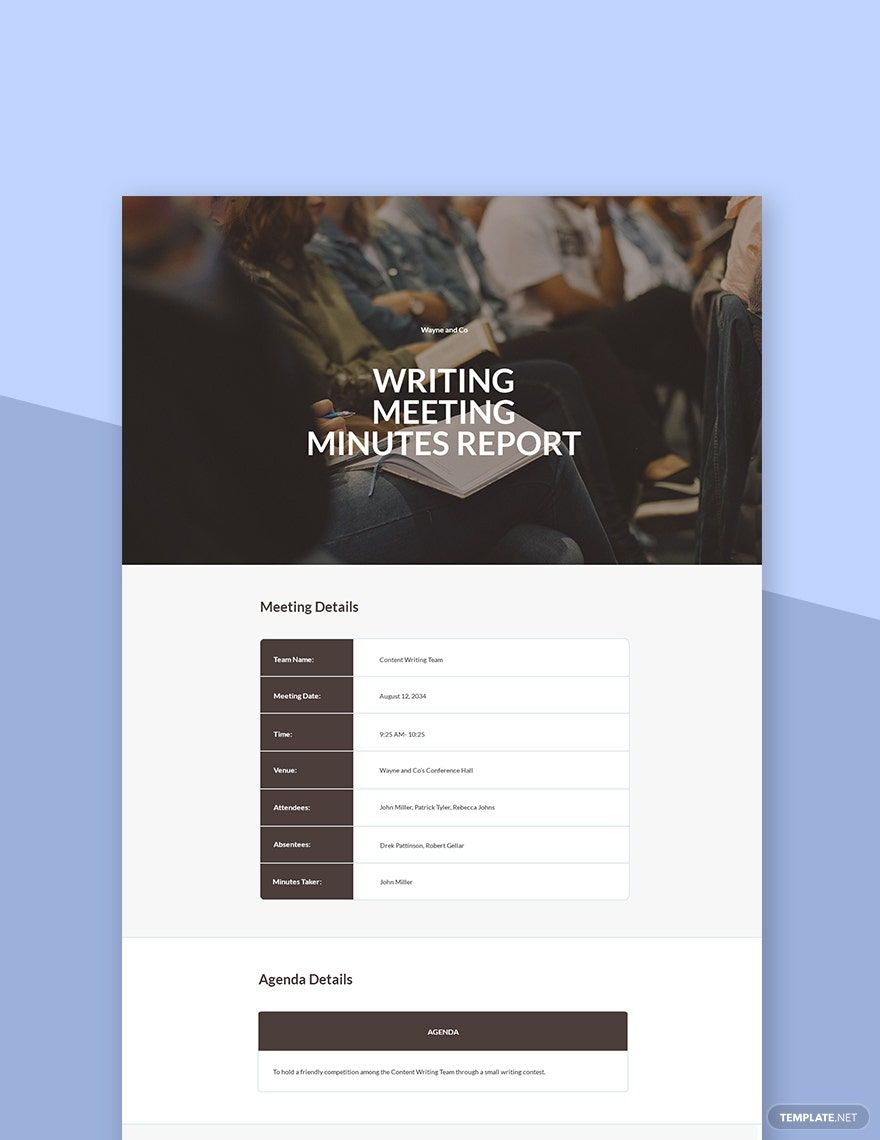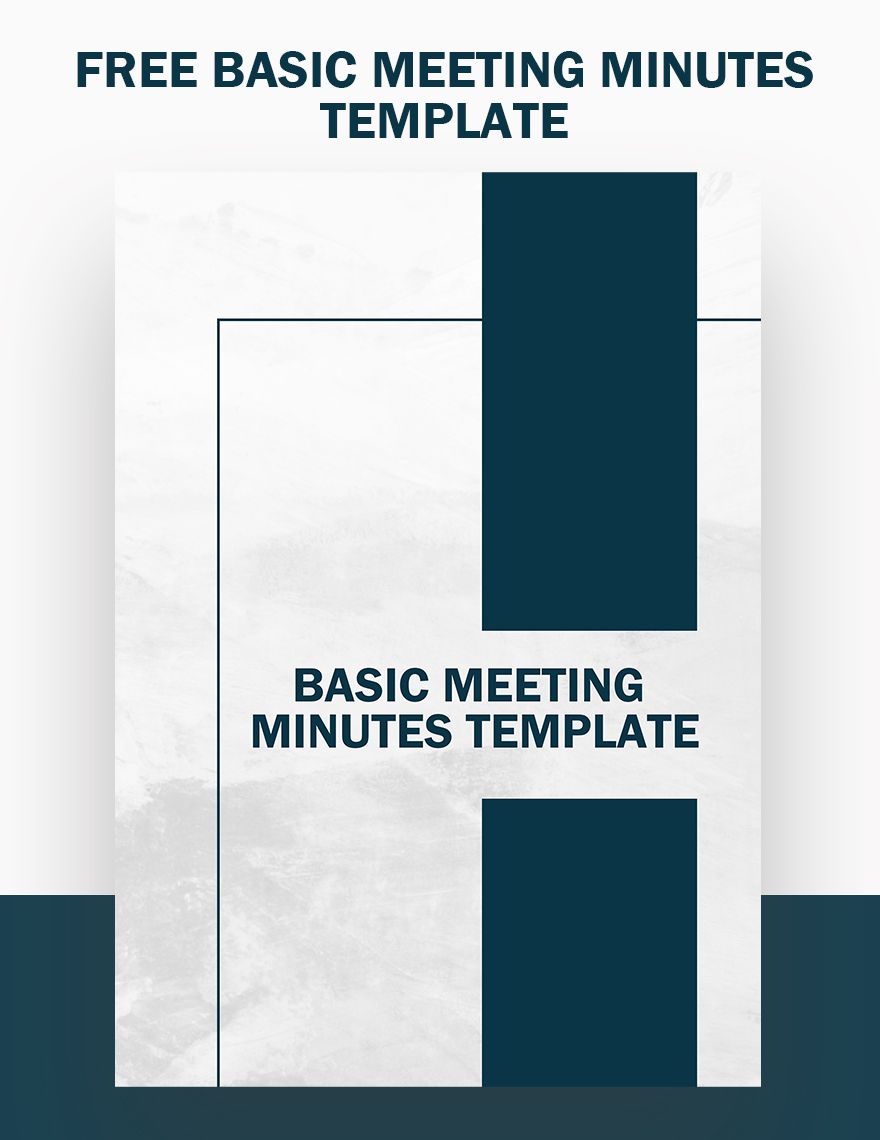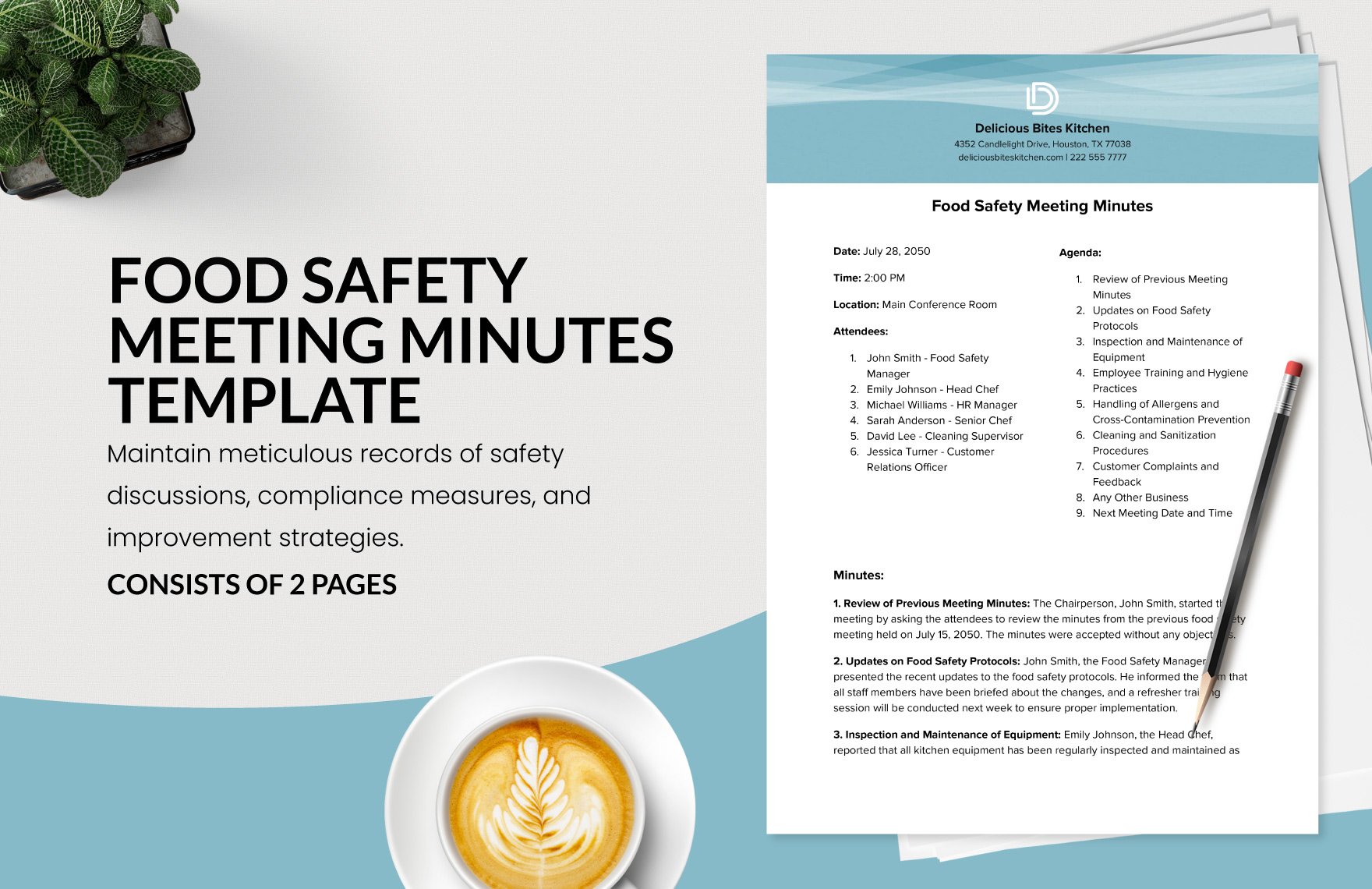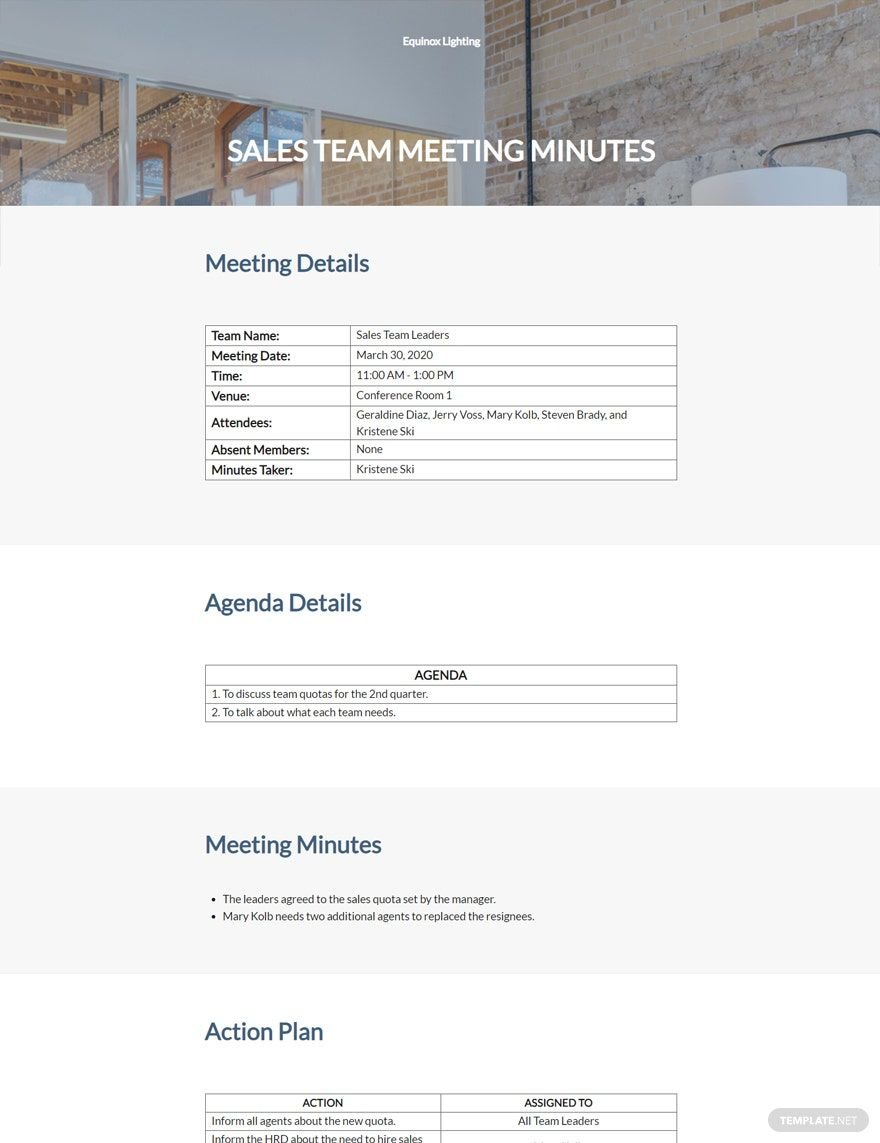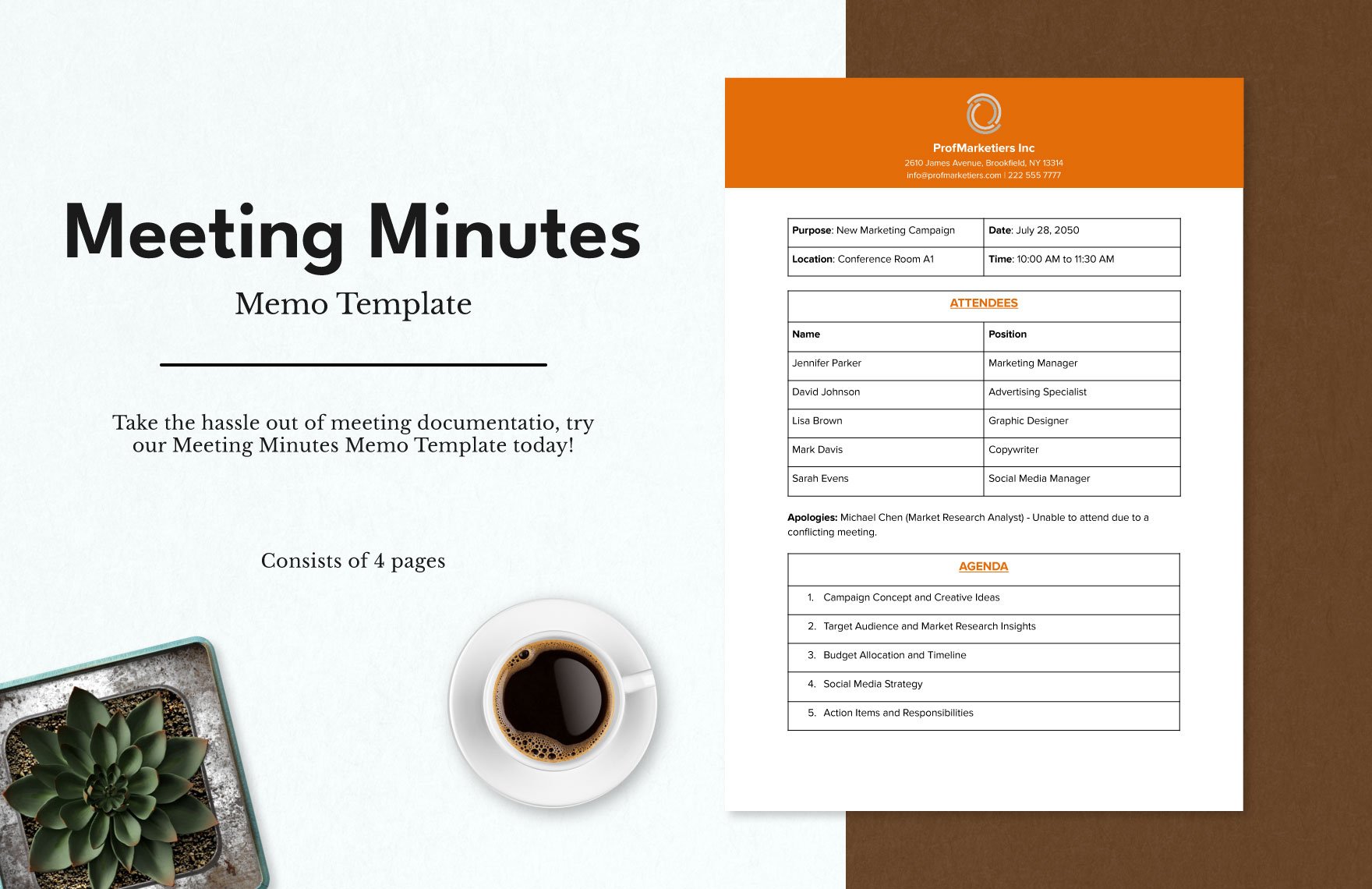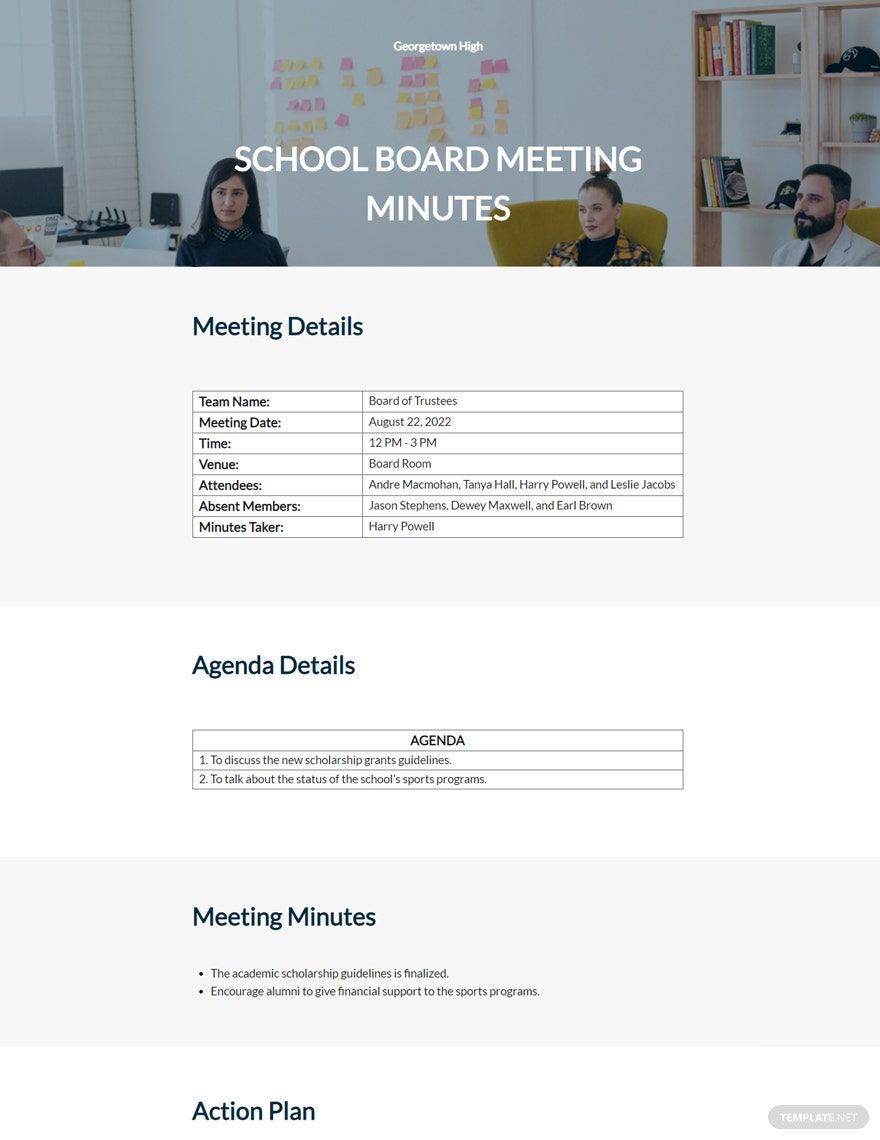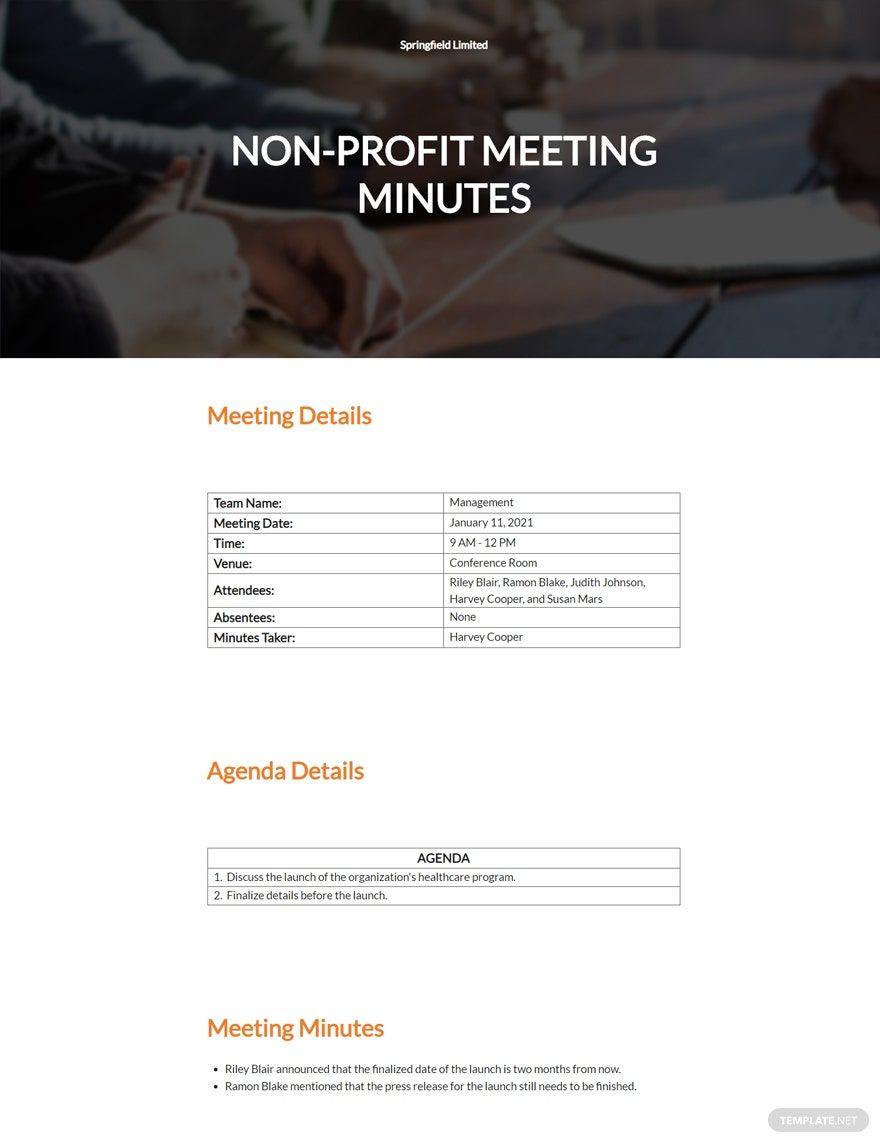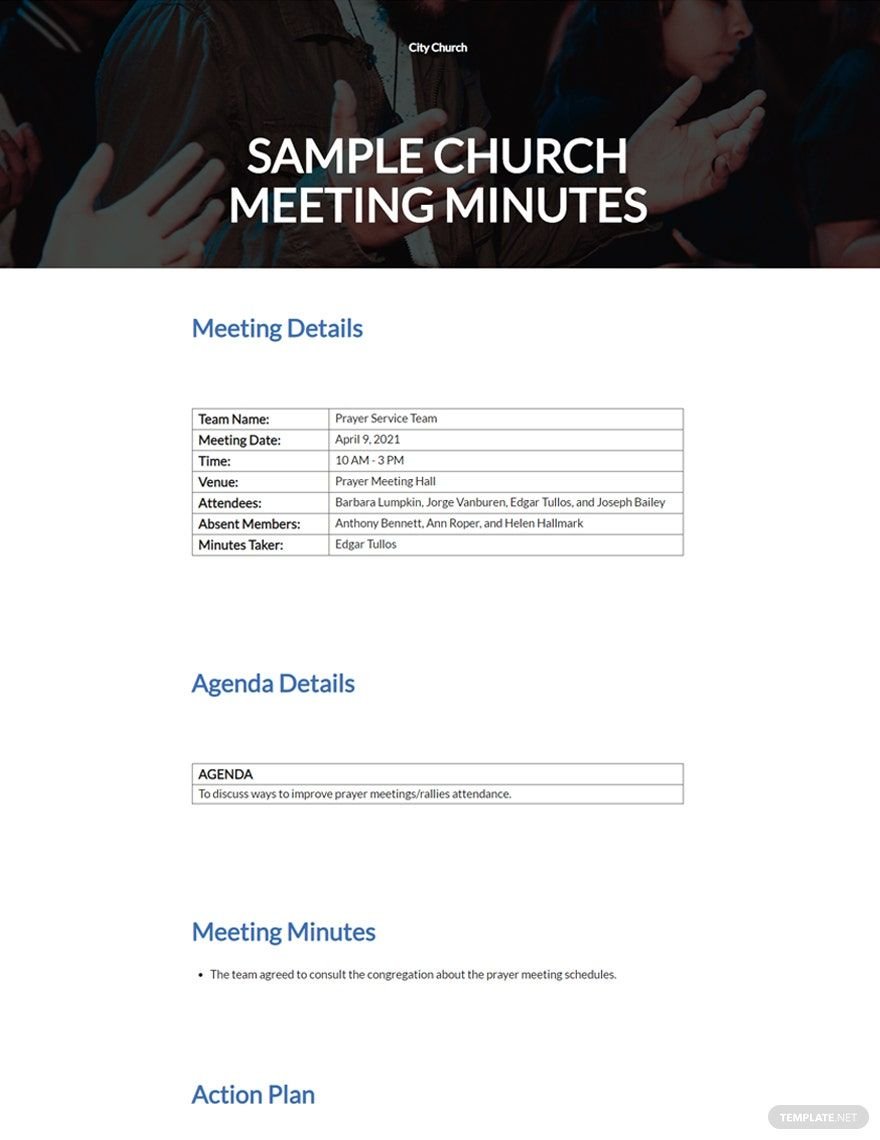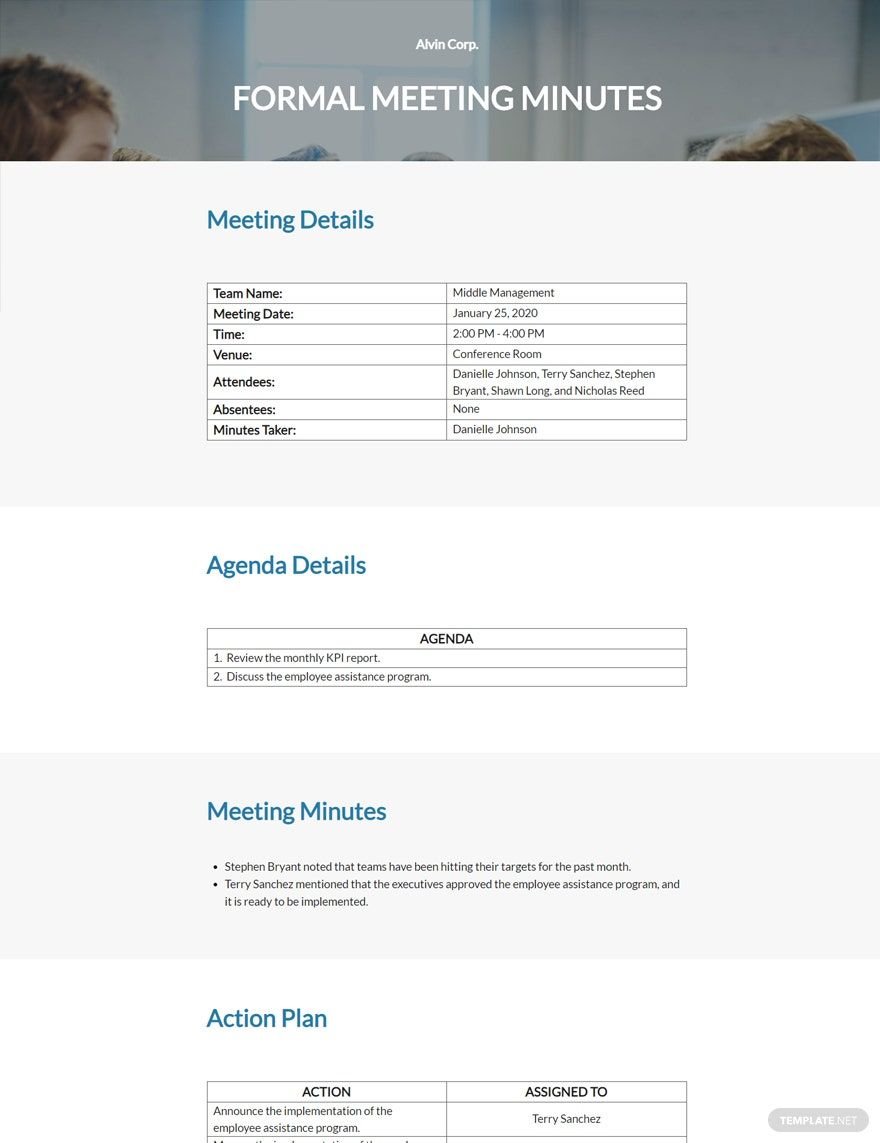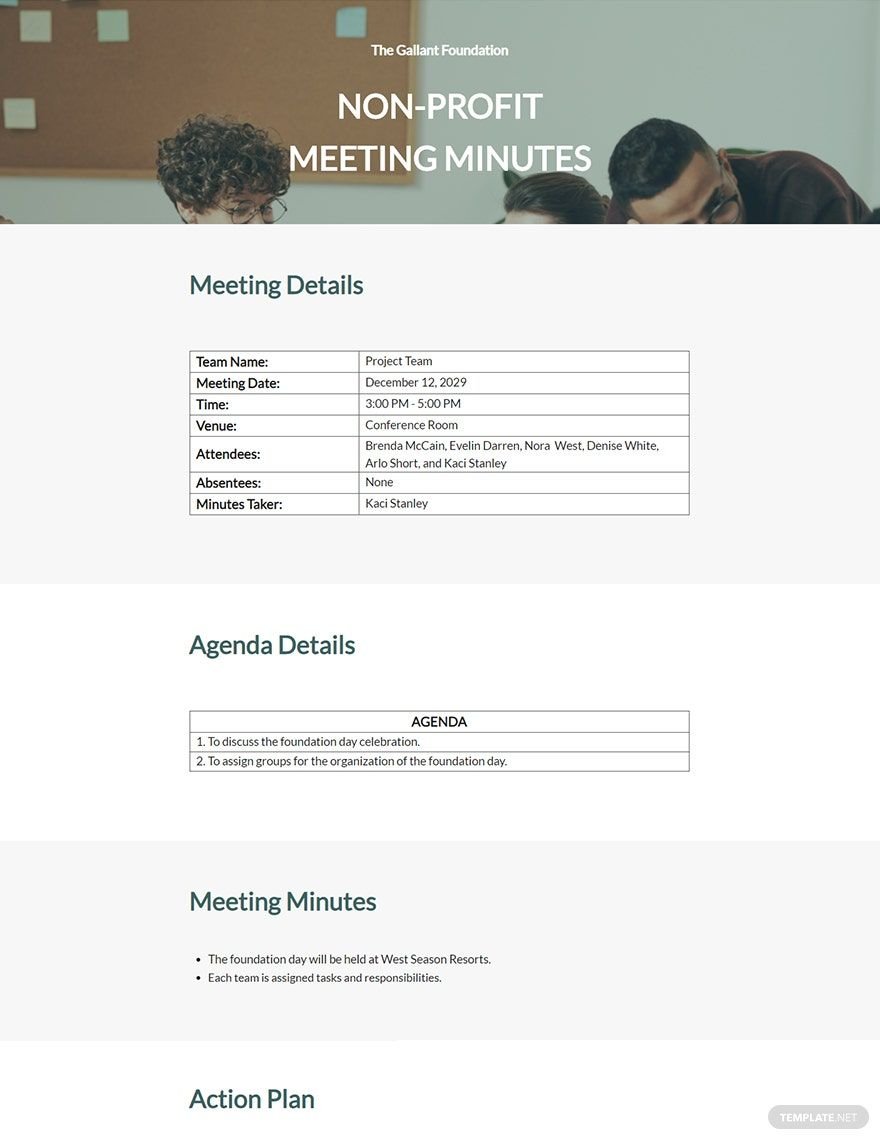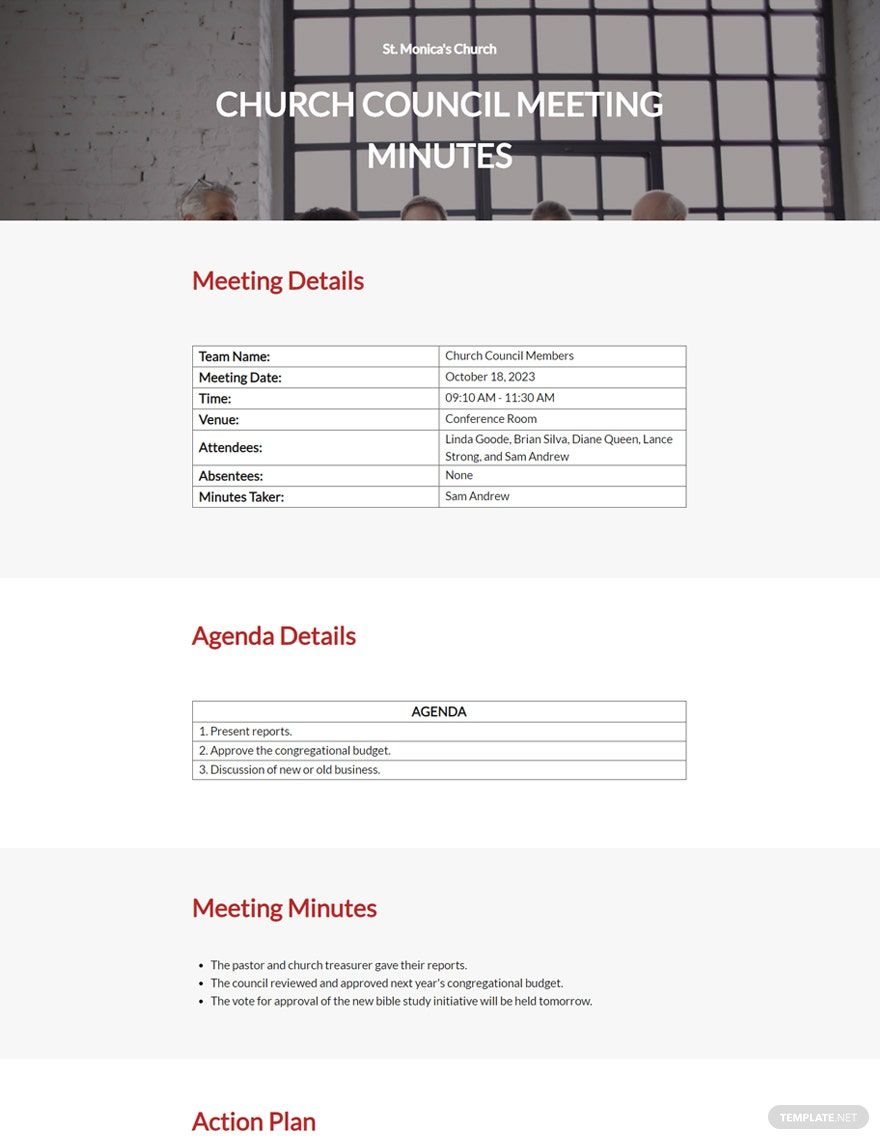Meetings will always involve the sharing of important information between individuals. To make sure that you are able to record all of them, you'll want to create meeting minutes. Luckily, we have just the templates to help you make one! Each one that we offer can easily be edited, meaning that you shouldn't have any problems when it comes to documentation. So whether it's board-related or your standard staff meeting, we have the all the professionally made meeting minute templates that you could ever need. So what are you waiting for? Download them now or join any of our subscription plans to enjoy all of the high-quality templates we have available!
What Are Meeting Minutes?
Meeting minutes are professional notes that serve as a detailed record of everything that took place within a meeting or a conference. Those who are in charge of creating one must be accurate in meticulous when it comes to gathering all the necessary information and placing it into the document. Having it also very useful for recapping what took place in previous meetings and in making decisions on how future meetings should be held.
How to Create Meeting Minutes?
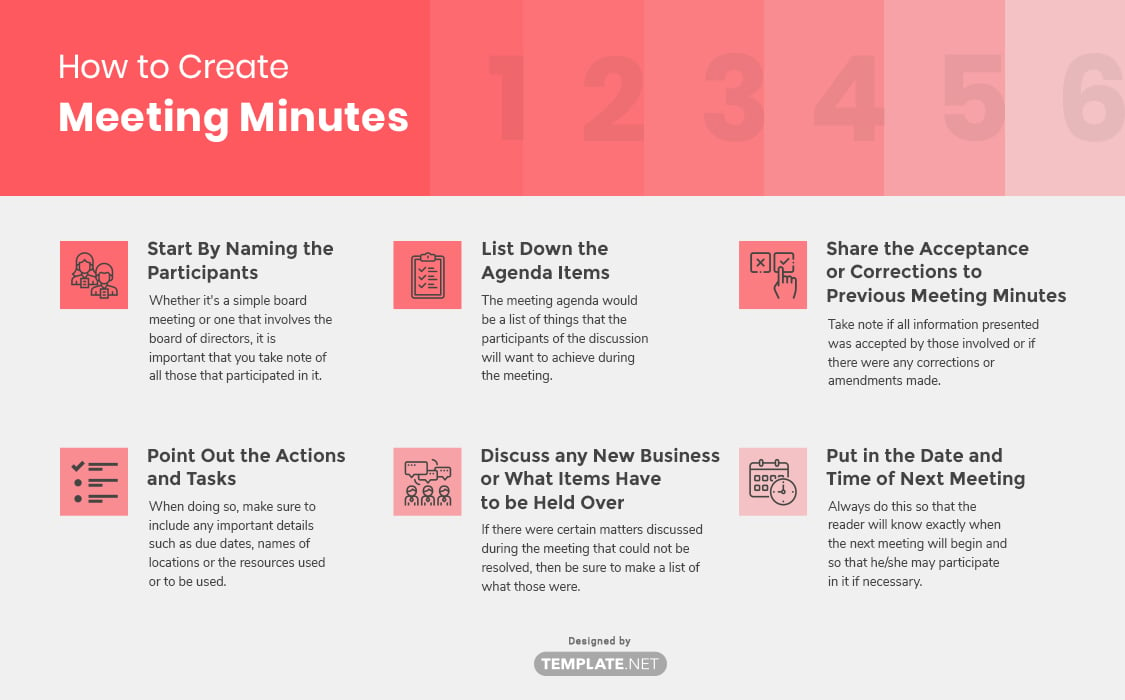
1. Start By Naming the Participants
Whether it's a simple board meeting or one that involves the board of directors, it is important that you take note of all those that participated in it. When doing this, make sure that you include their first names and last names along with their job position titles. Also, be sure to point out those who were expected to participate but were not able to.
2. List Down the Agenda Items
The meeting agenda would be a list of things that the participants of the discussion will want to achieve during the meeting. It is important to do this as it will help the reader understand the purpose of the meeting and what the participants managed or failed to accomplish after they're done going through the document. Don't forget to include in your professional report descriptions for each agenda item written down.
3. Share the Acceptance or Corrections to Previous Meeting Minutes
If the first meeting and the previous staff meeting minutes are brought up during the current discussion between the participants, then you will need to take note of how the previous meeting minutes are impacting the current one. Take note of all the information presented was accepted by those involved or if there were any corrections or amendments made.
4. Point Out the Actions and Tasks
Next is for you to point out everything that went on during the meeting. Describe what kind of actions and tasks that the participants agreed to have done or had already done. When doing so, make sure to include any important details such as due dates, names of locations or the resources used or to be used. Lastly, keep your written notes relevant and straightforward by identifying the do's and don'ts of meeting minutes.
5. Discuss any New Business or What Items Have to be Held Over
If there were certain matters mentioned in your professional presentation that could not be resolved, then be sure to make a list of what those were. The same goes for any new topics that were brought up and were either discussed and resolved during the current meeting or if they will be the main subjects of the next one. Make sure to provide a clear description for each one that you list down.
6. Put in the Date and Time of Next Meeting
Whether you're writing weekly or monthly meeting minutes, it should inform the reader when the next meeting will begin and so that they may participate in it if necessary. Be sure to put in the month, day, and year when writing down the date and the exact time in which it is expected to start and end. Also, include the address of the venue as it's possible that this may have to be changed due to circumstances.
